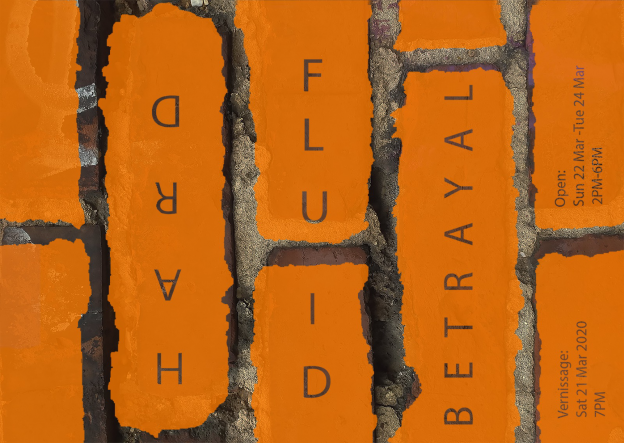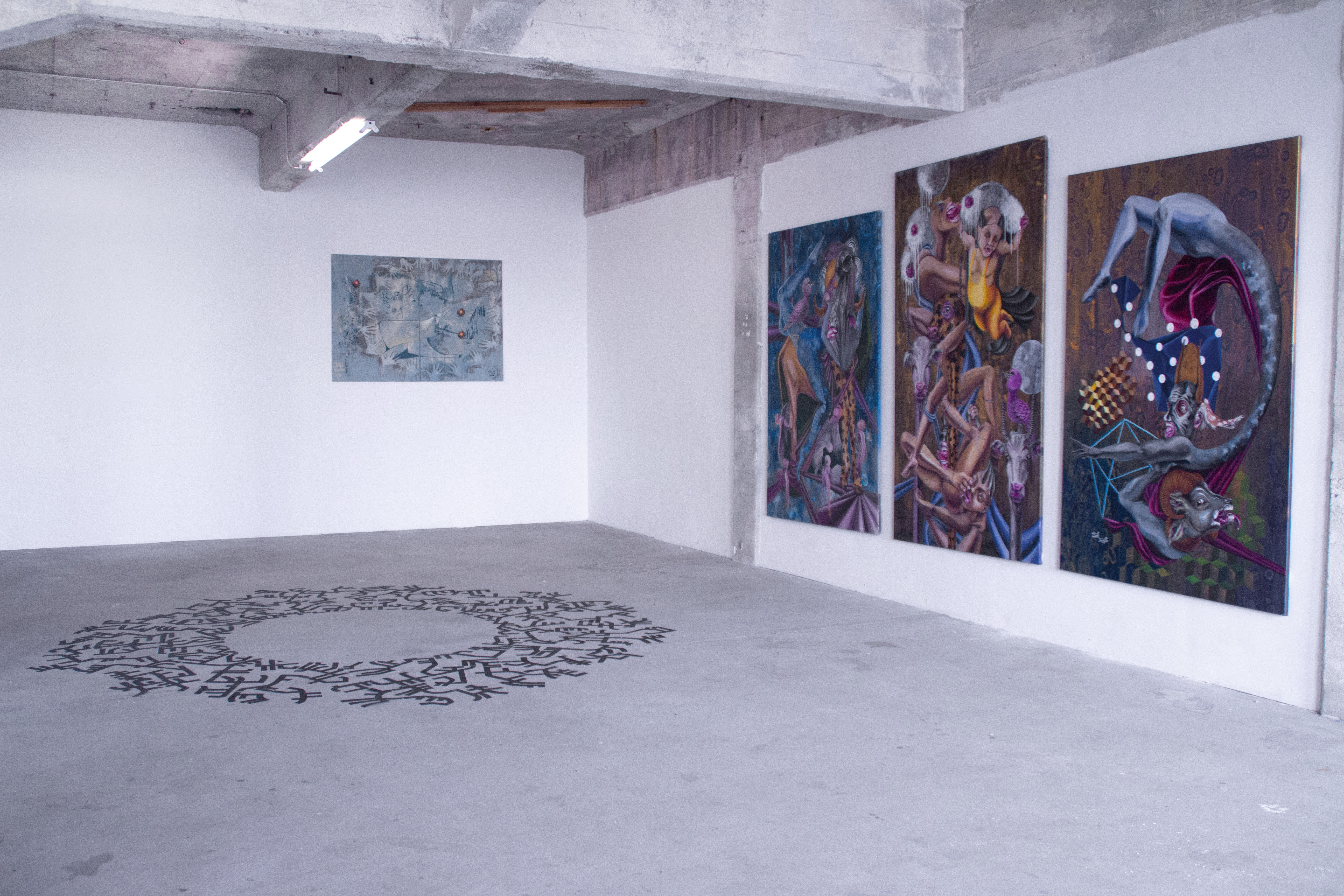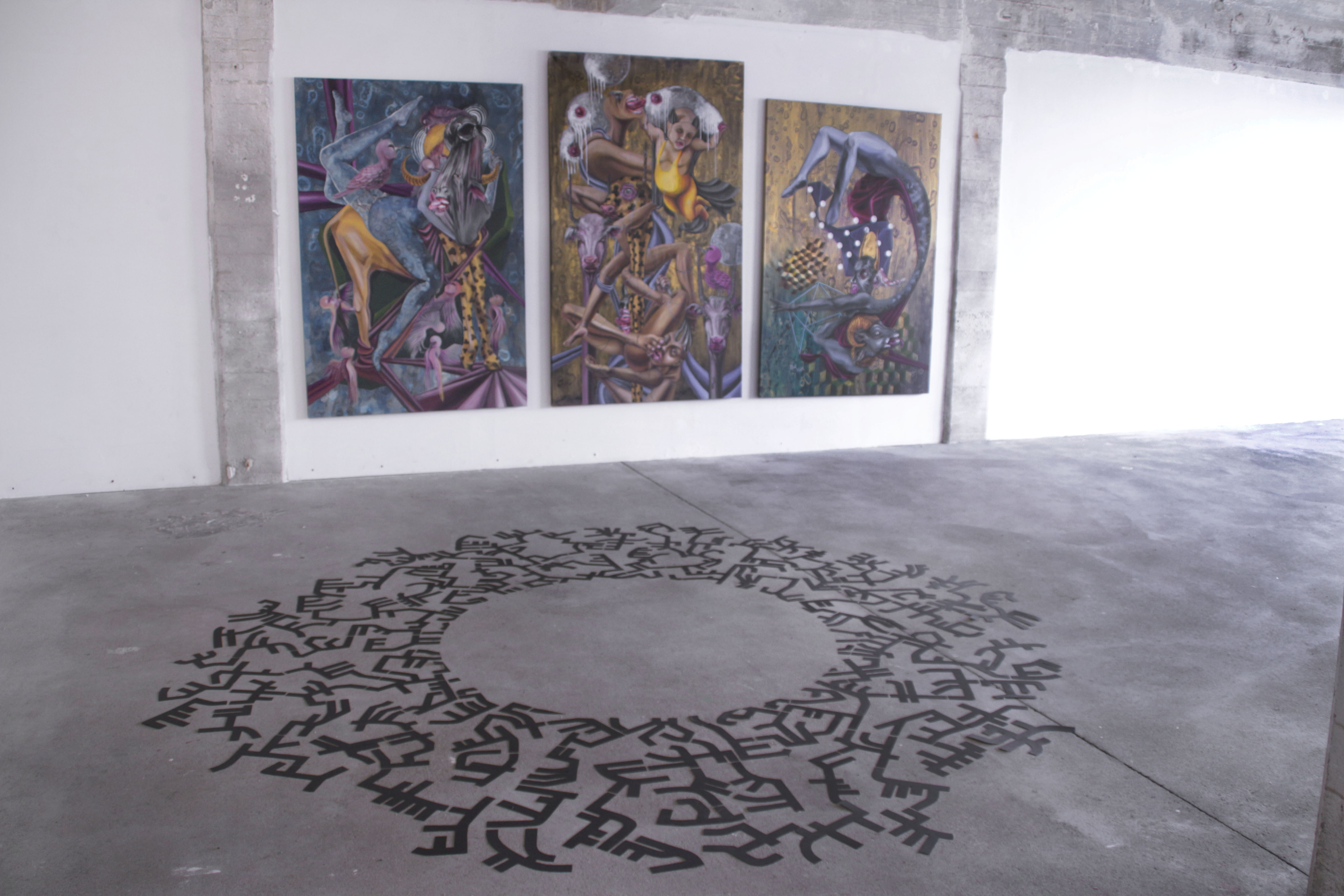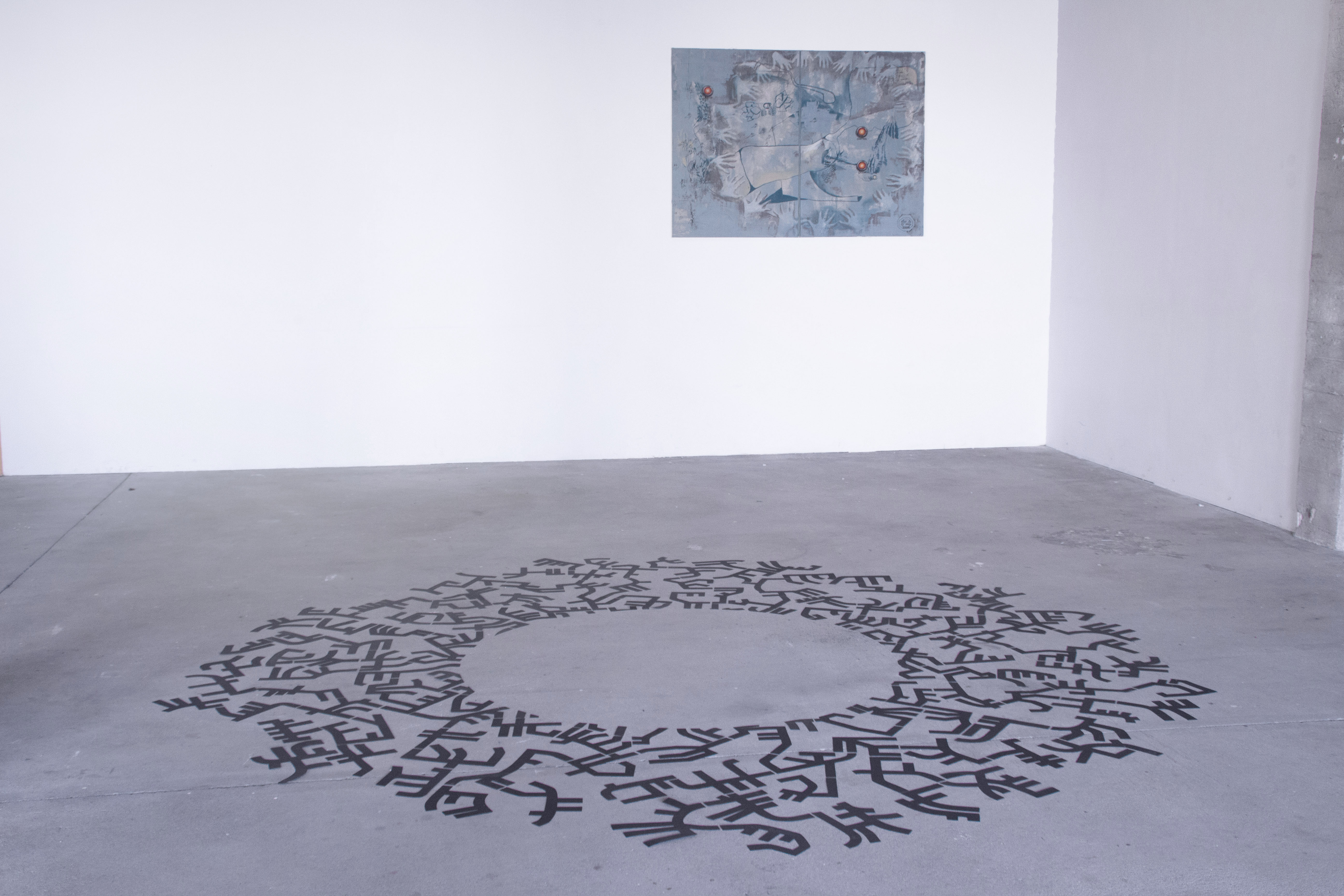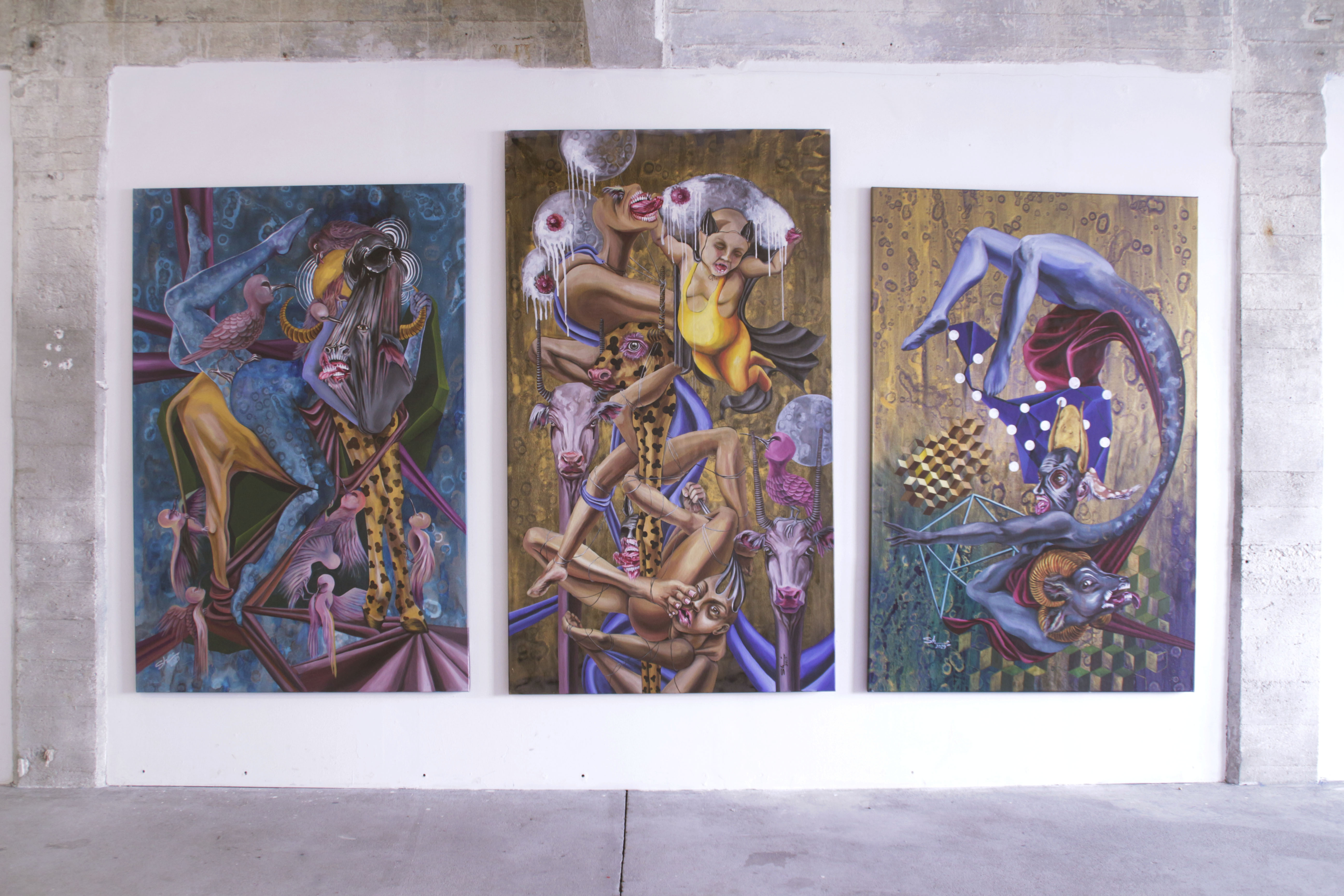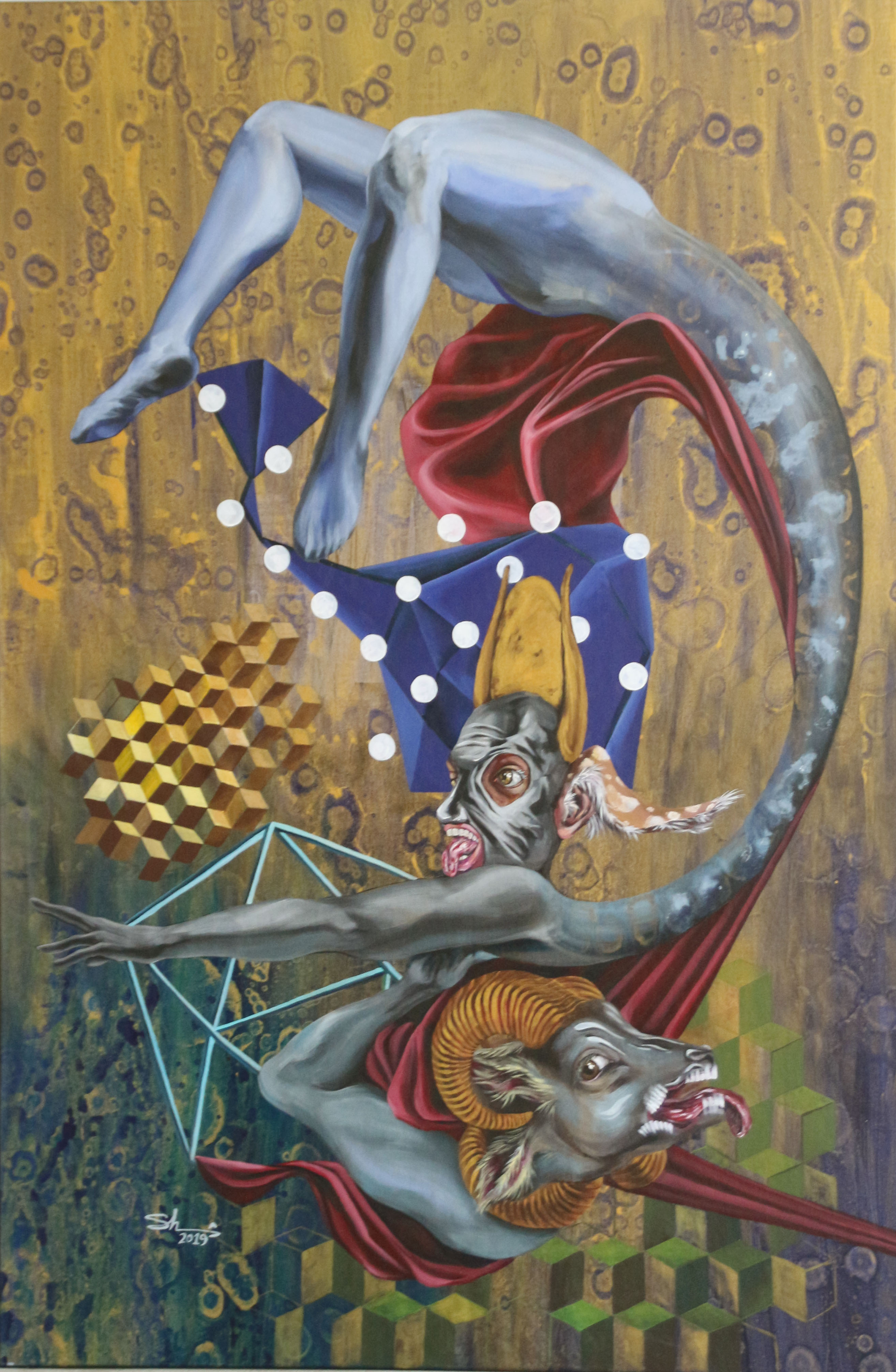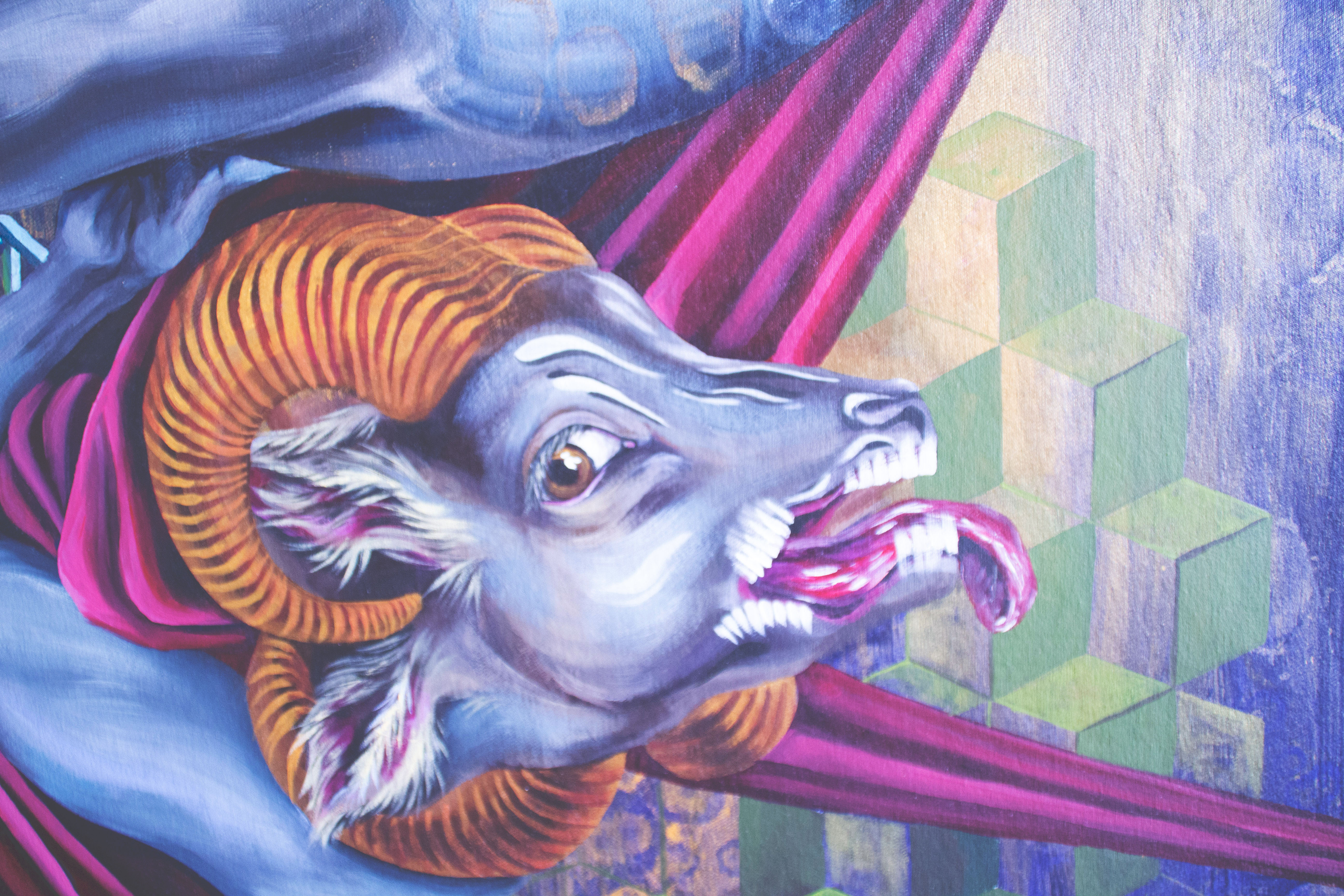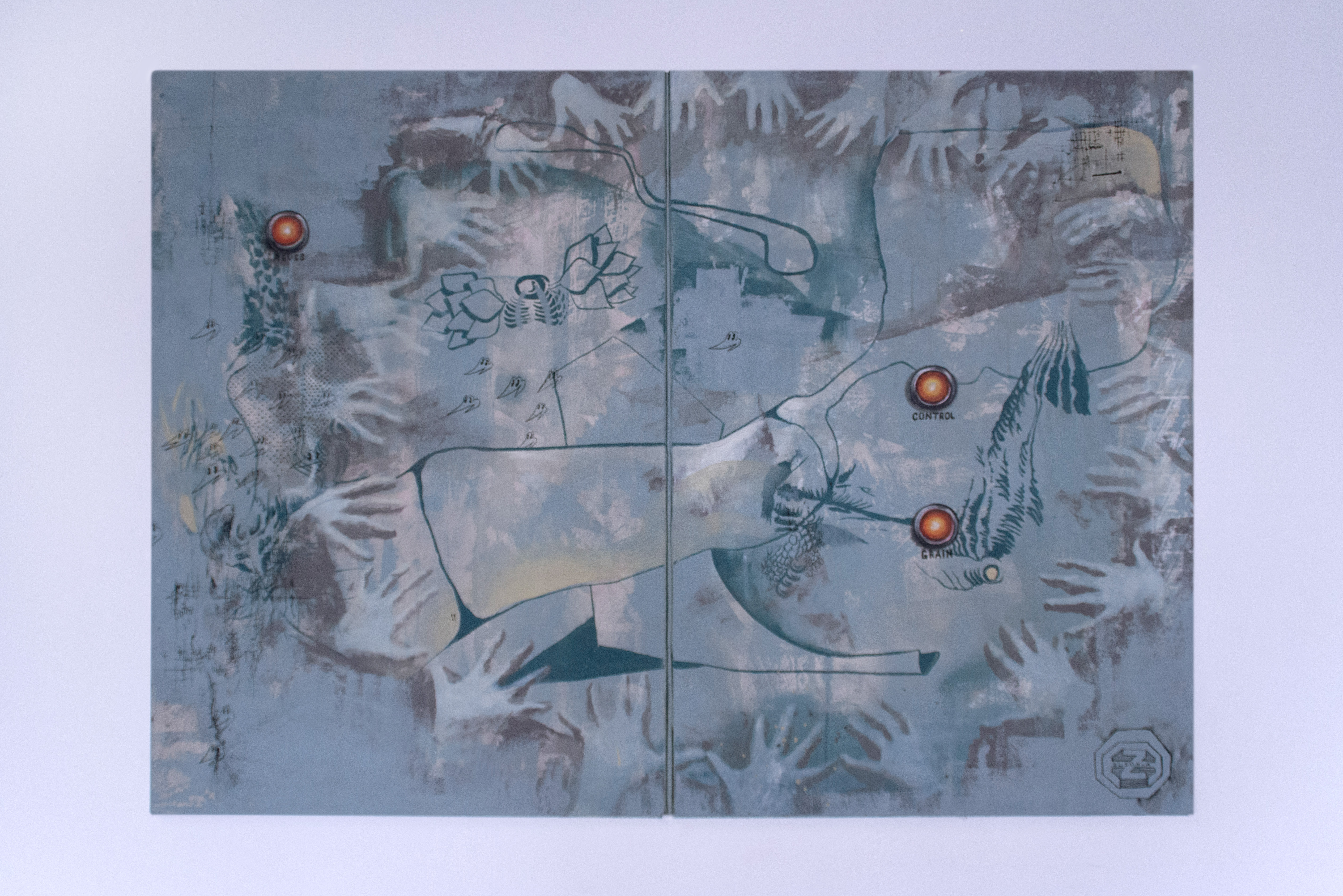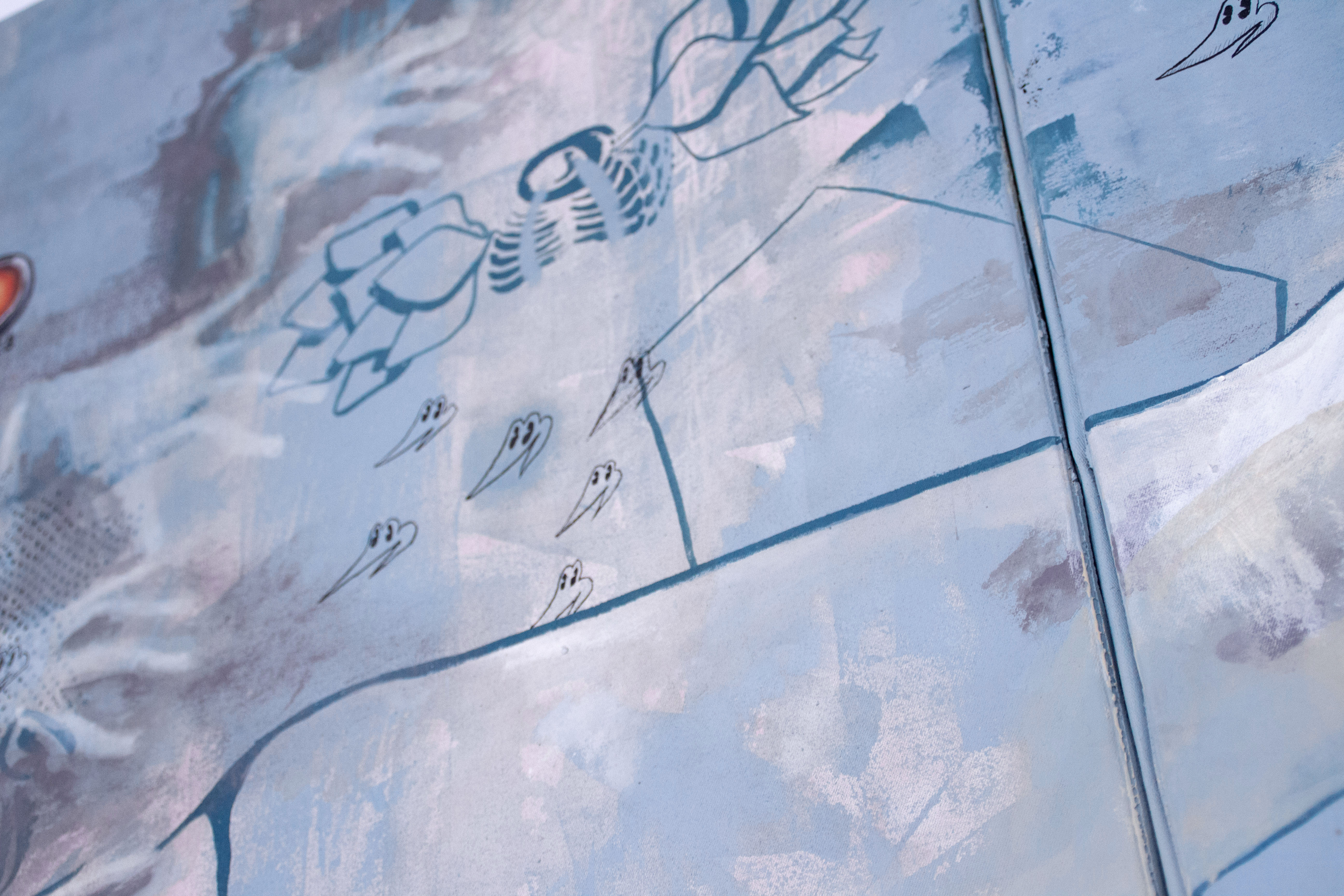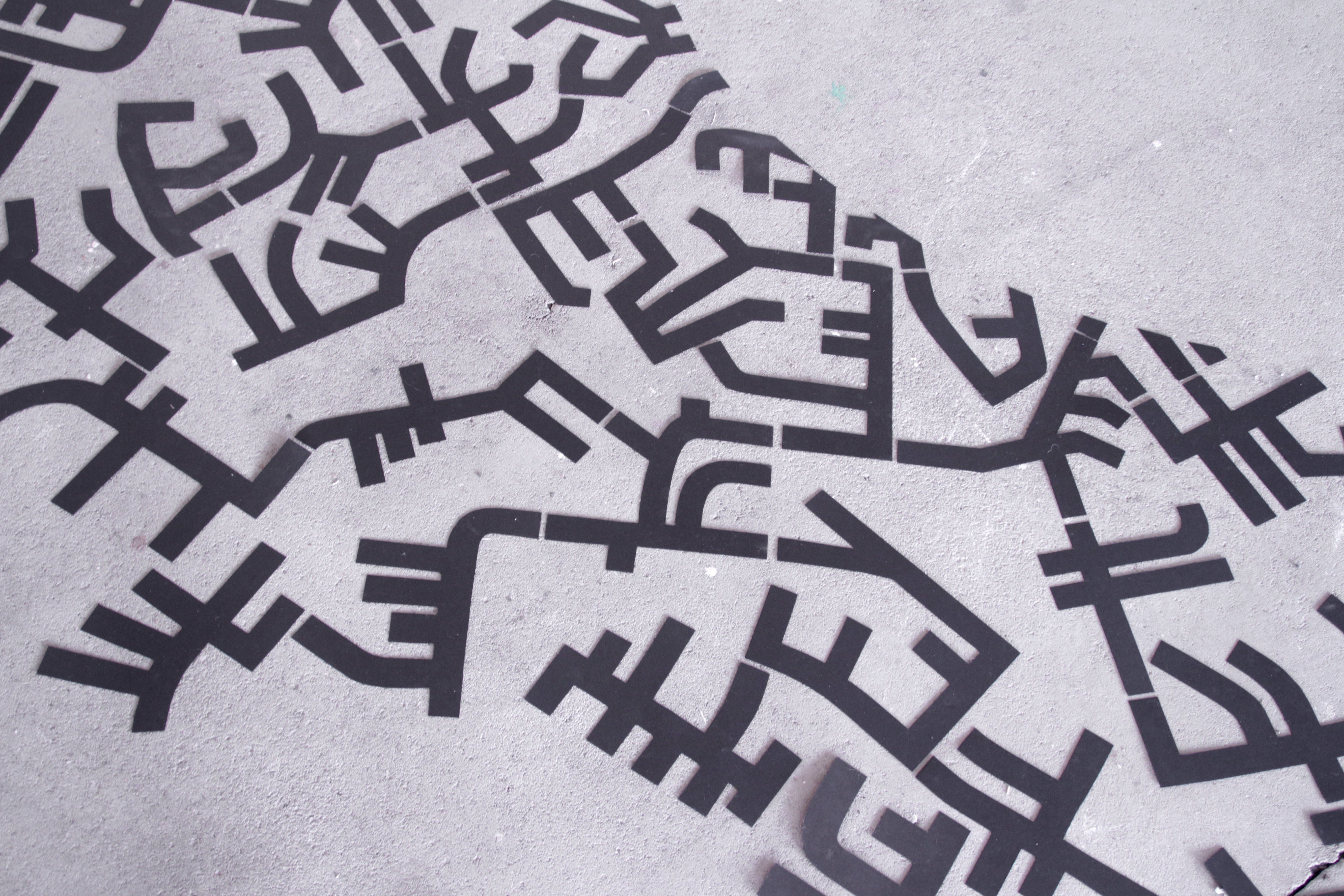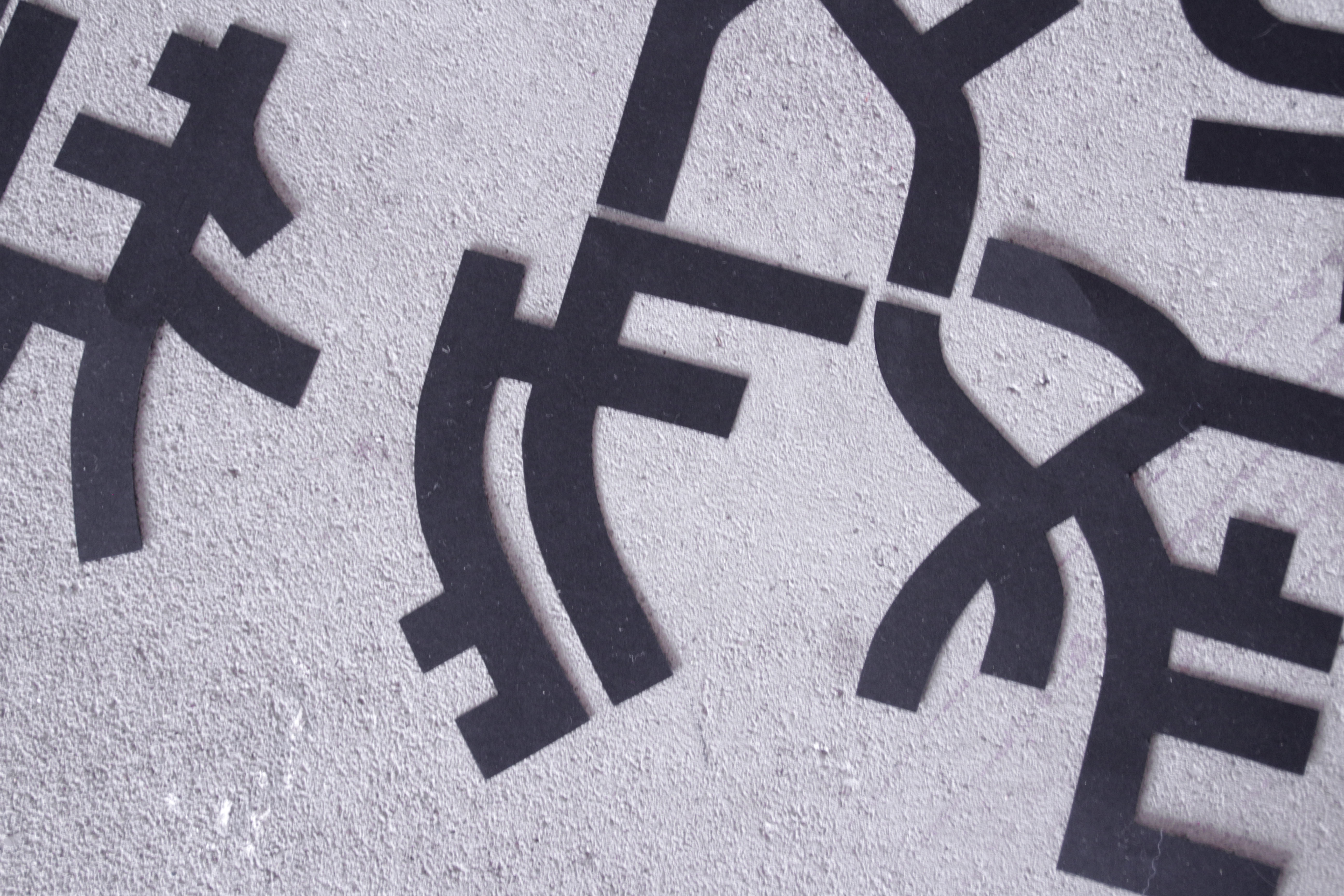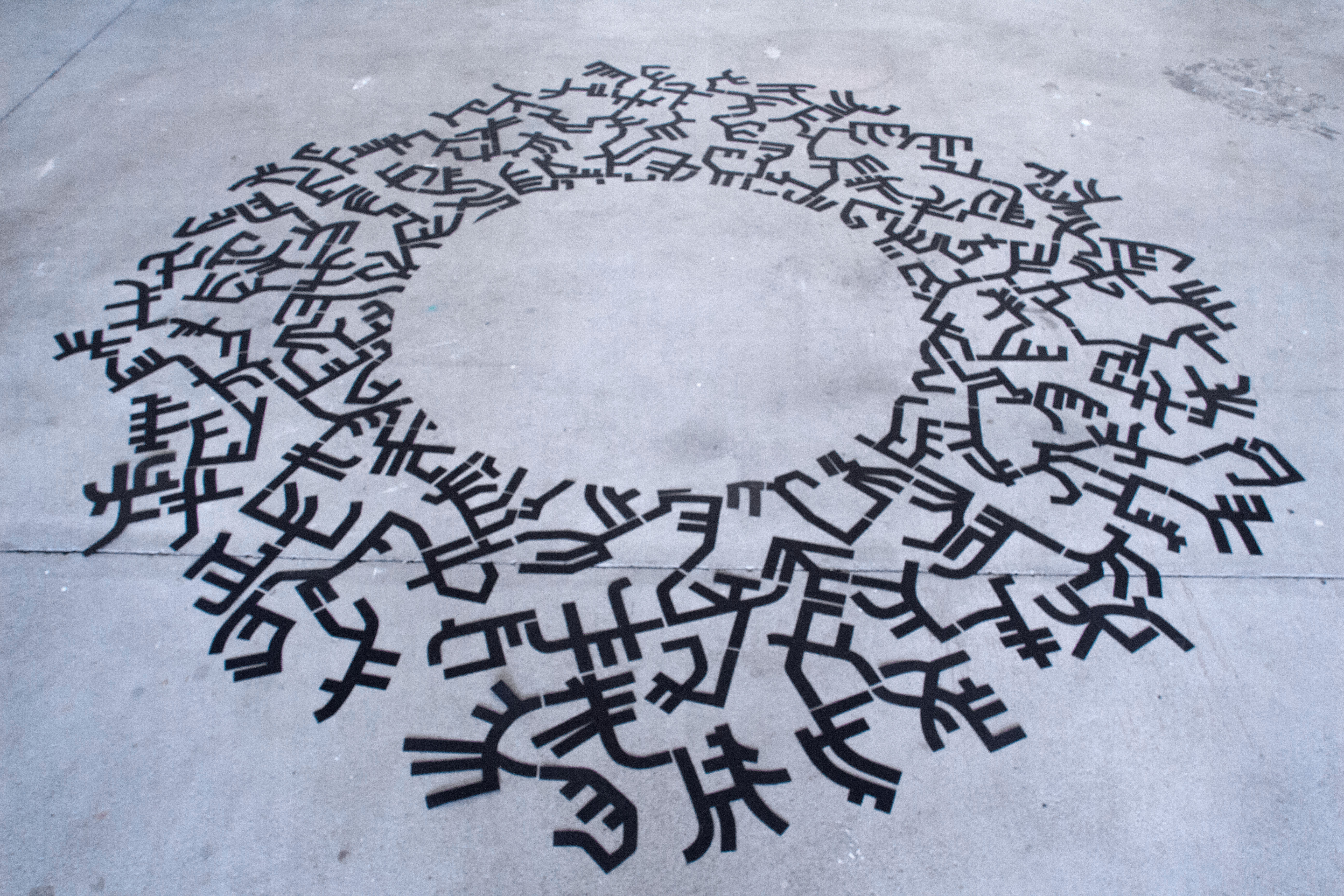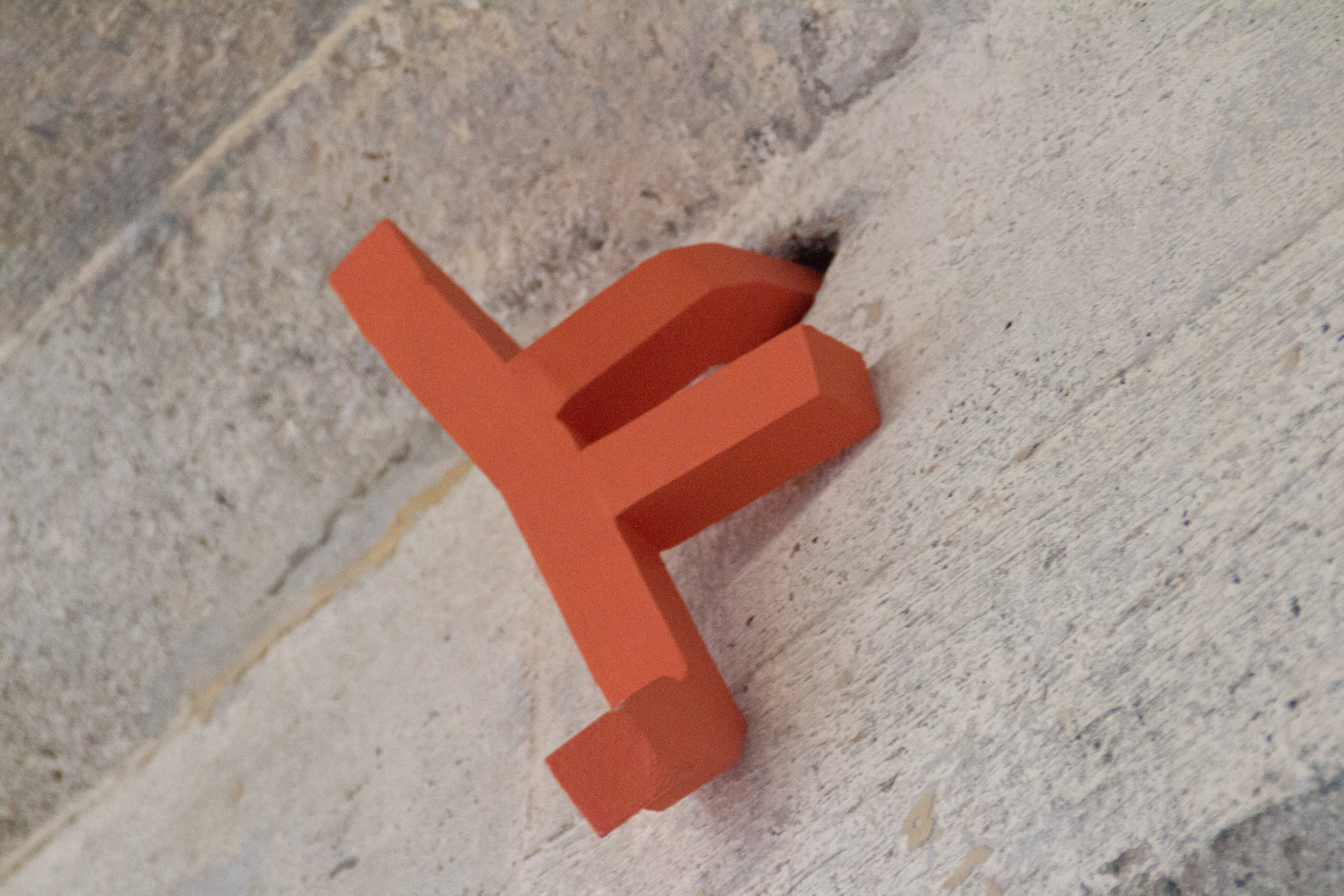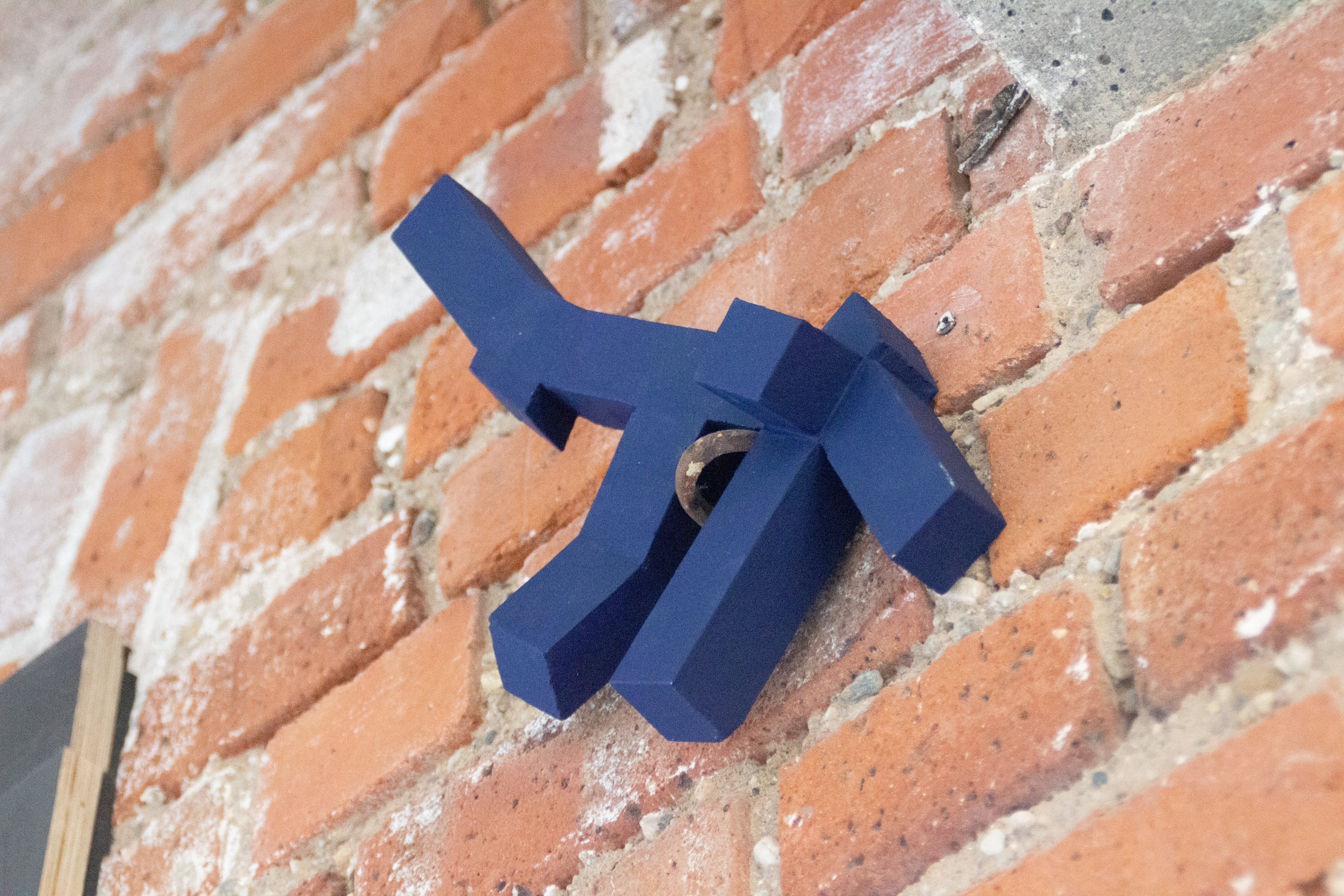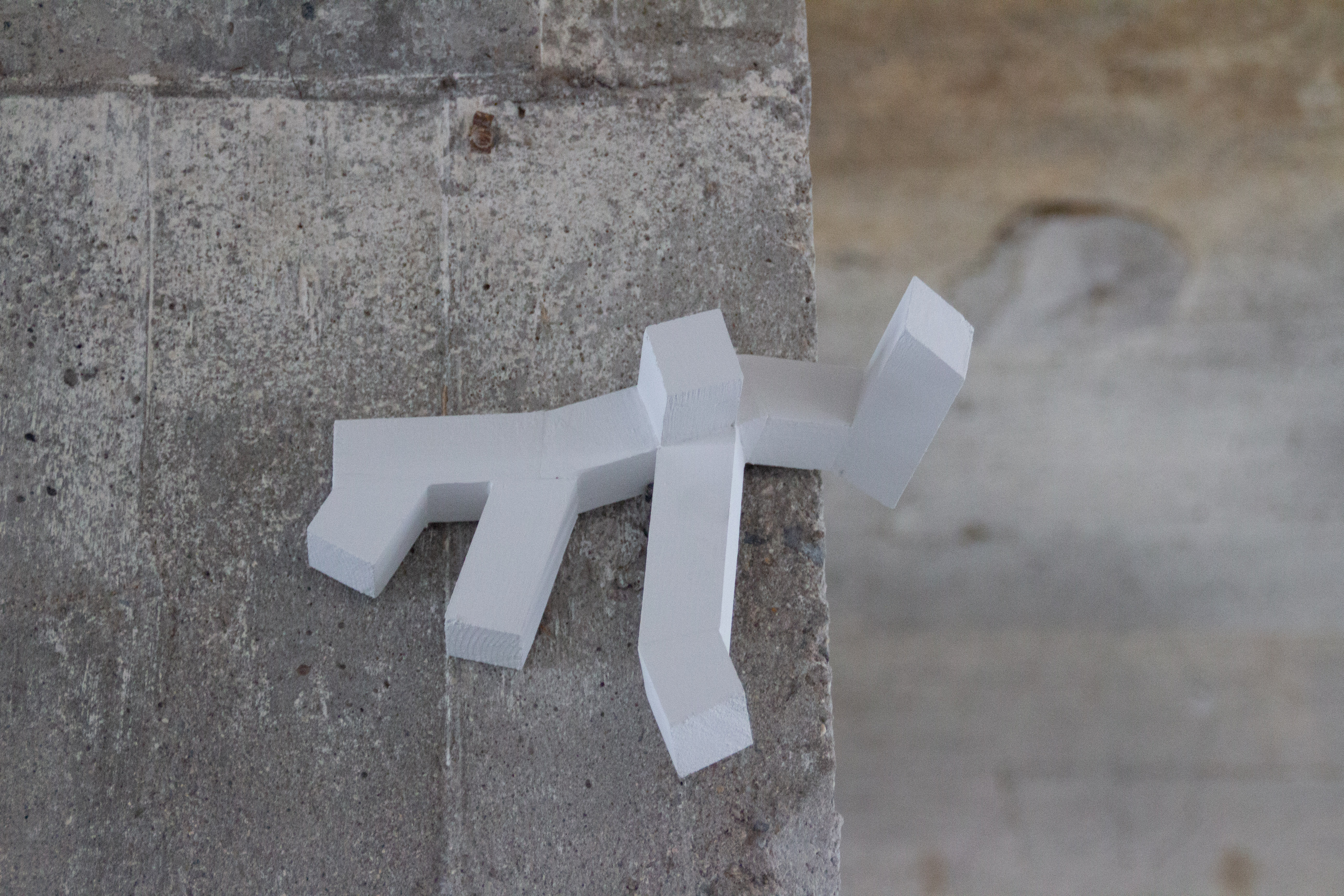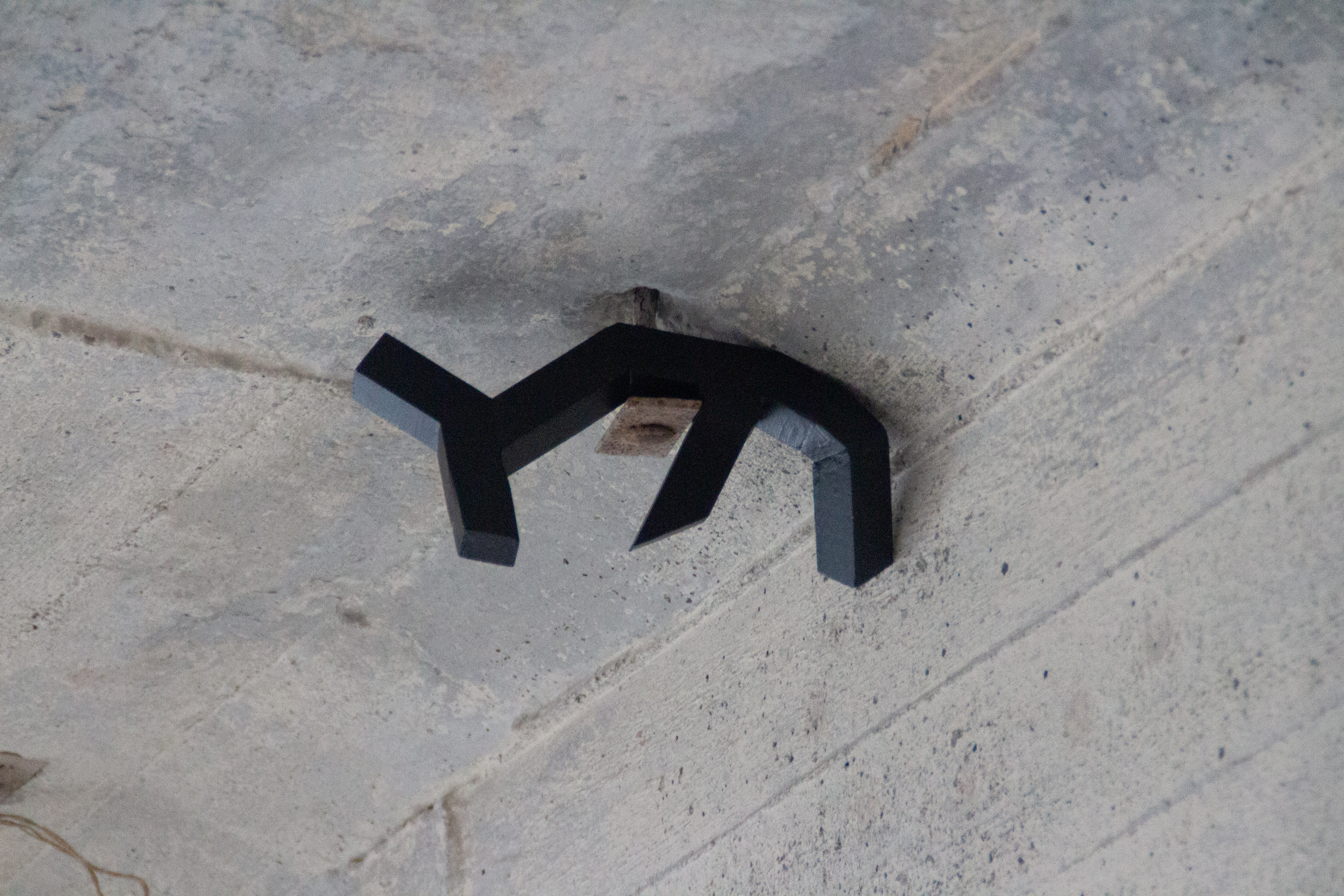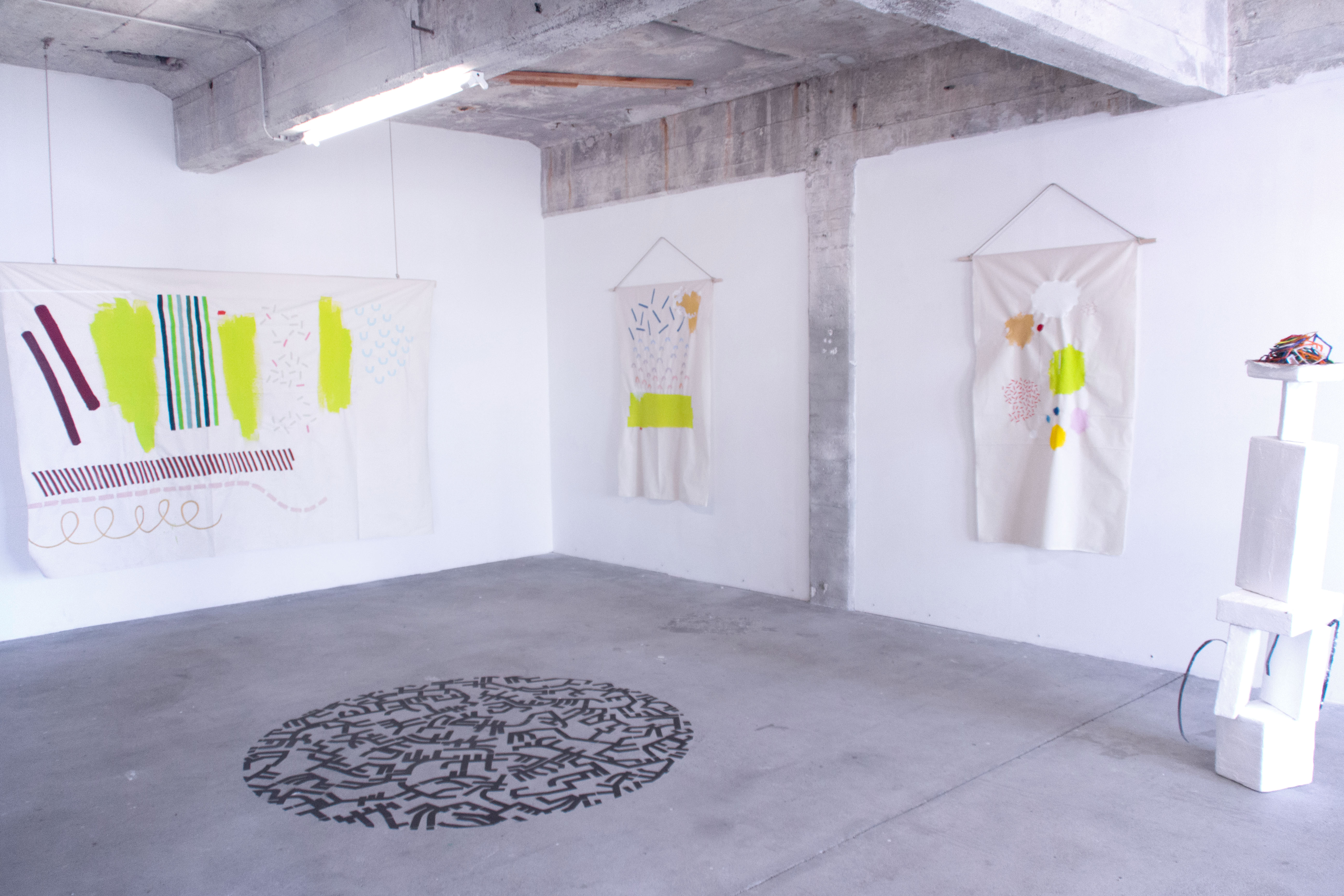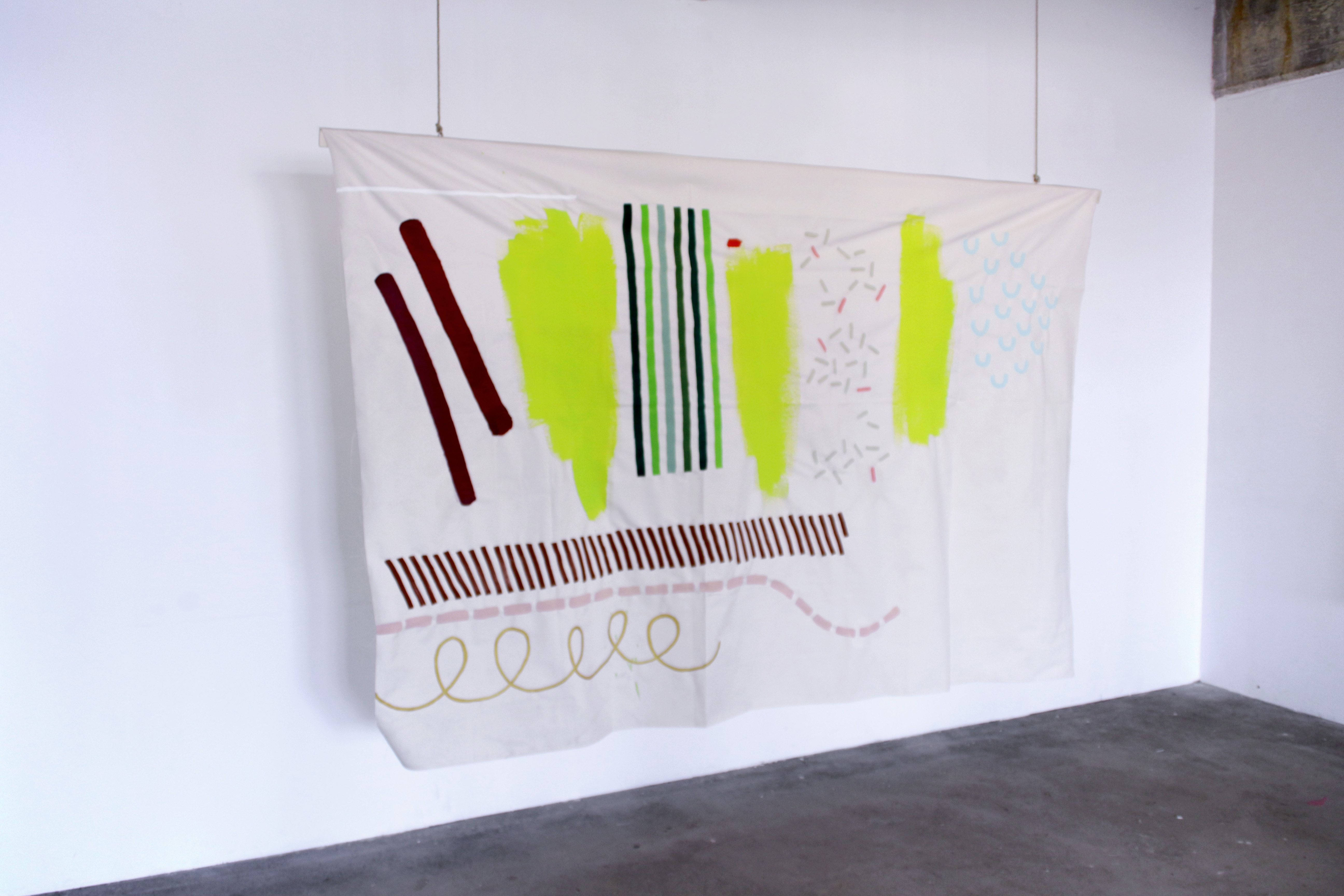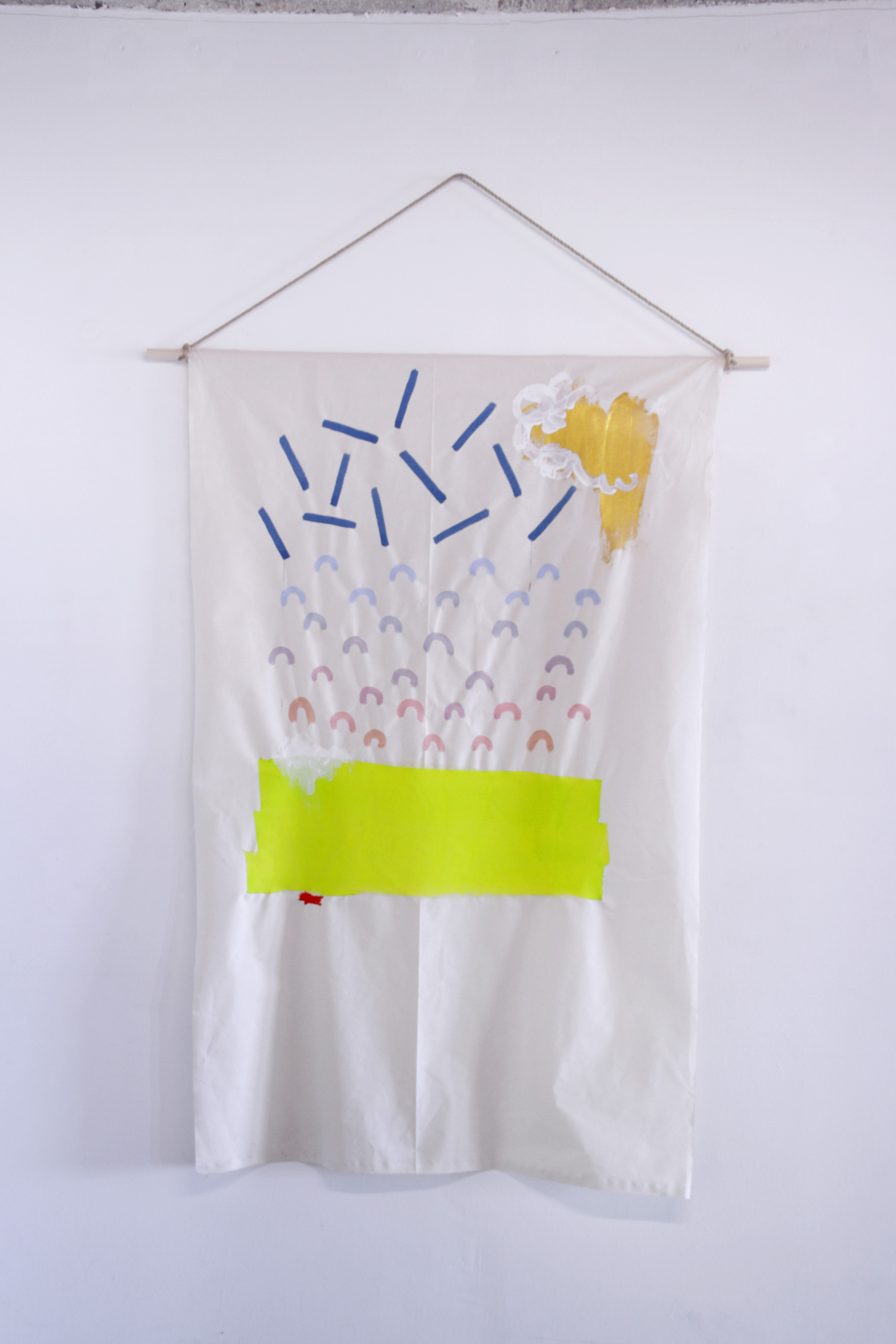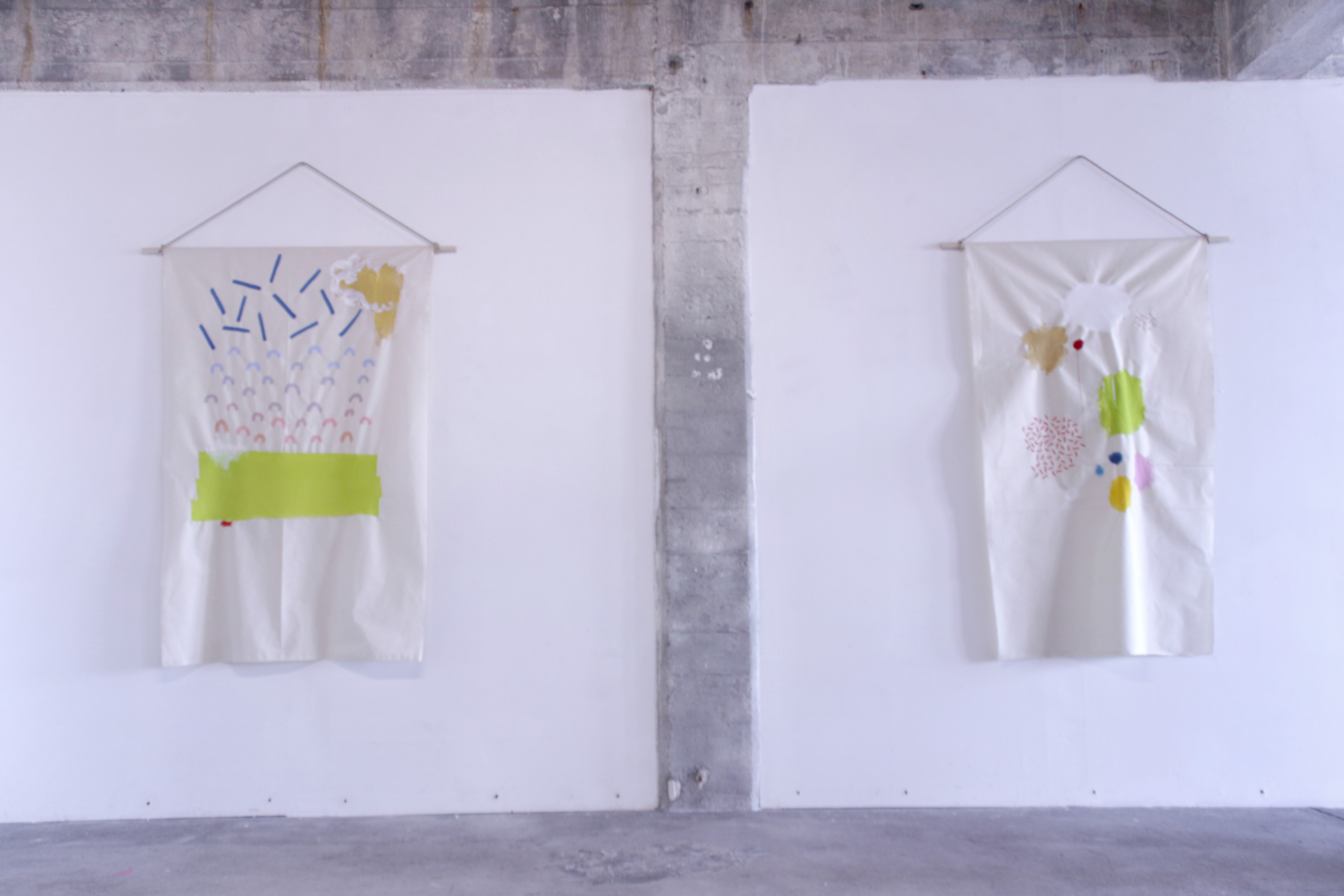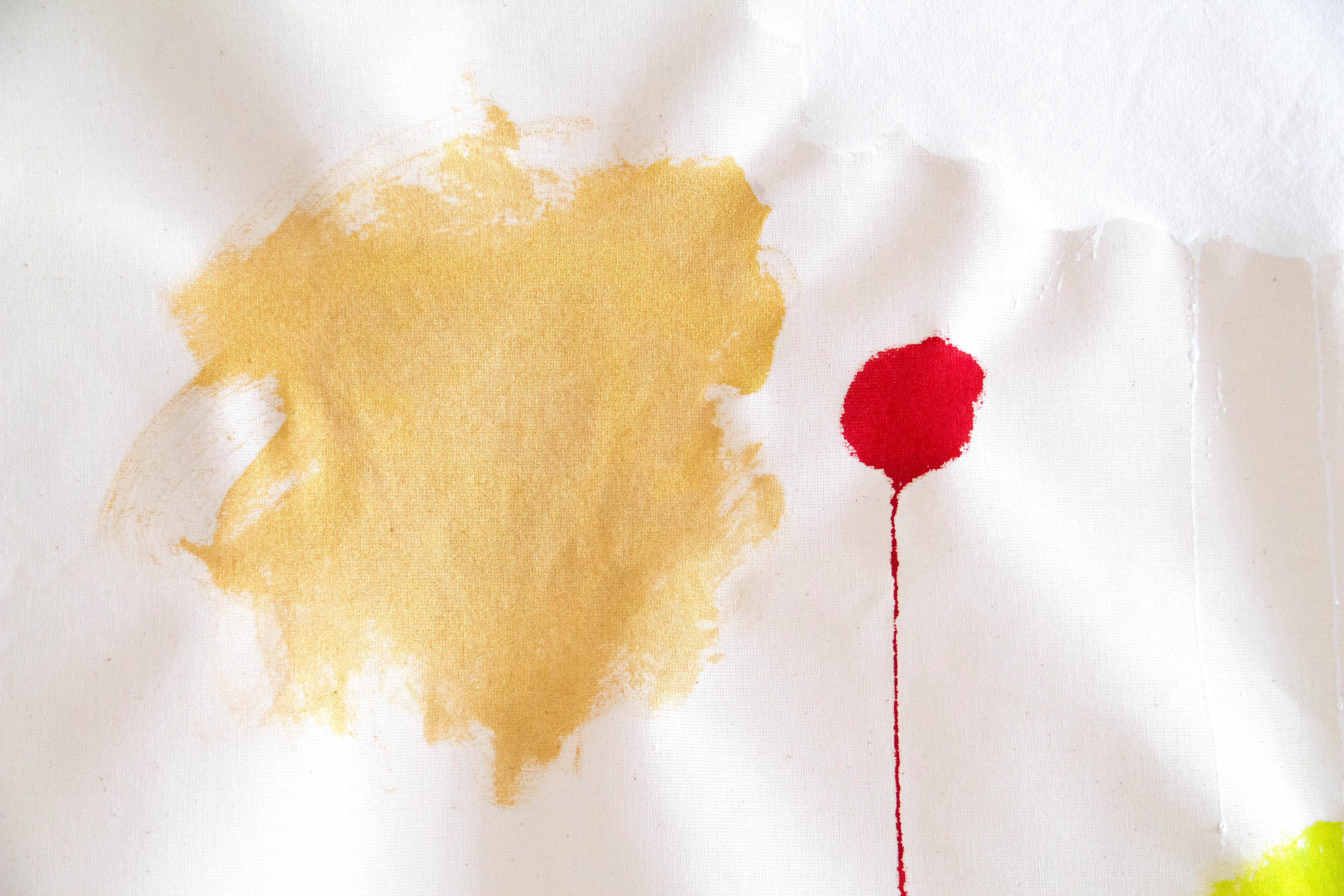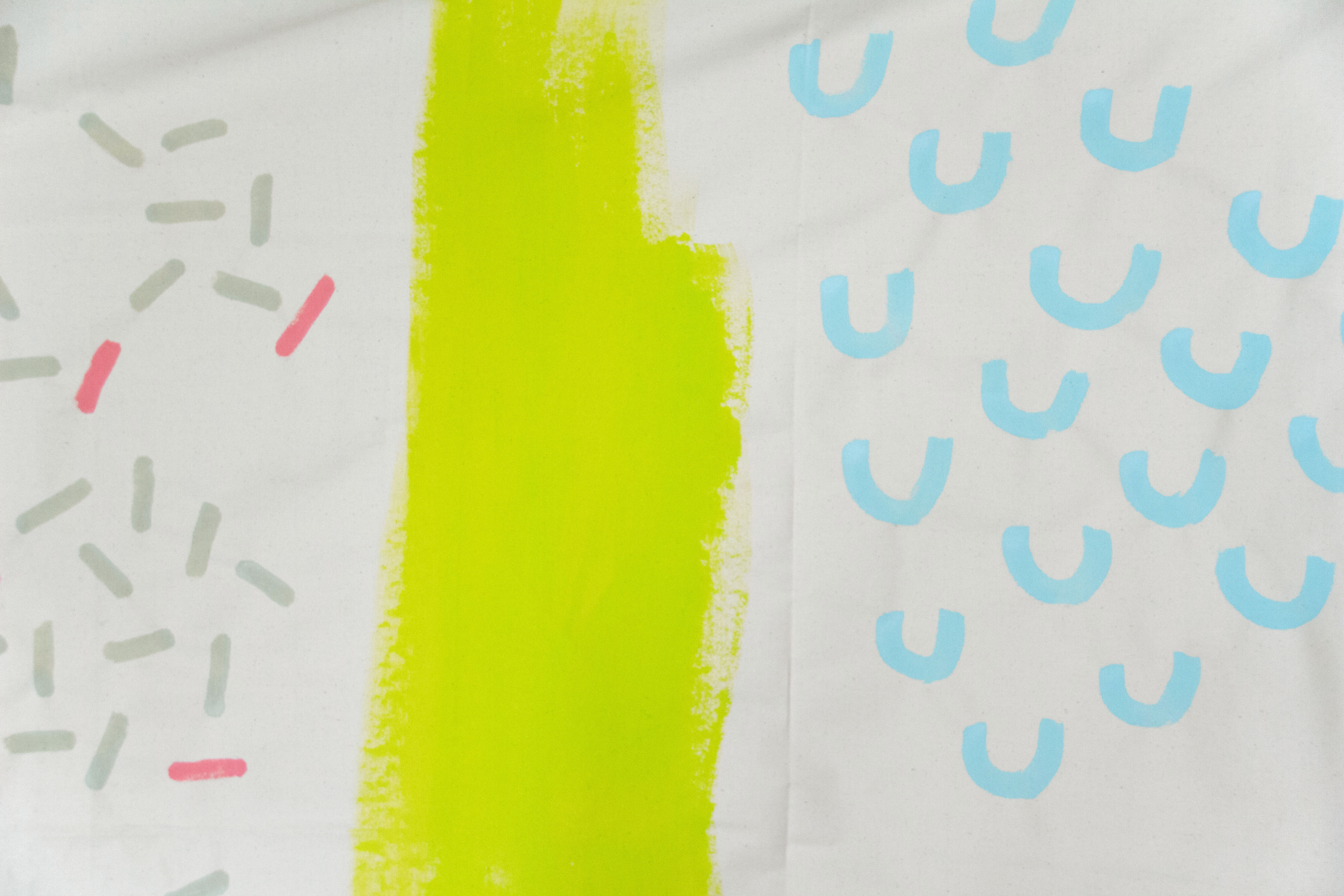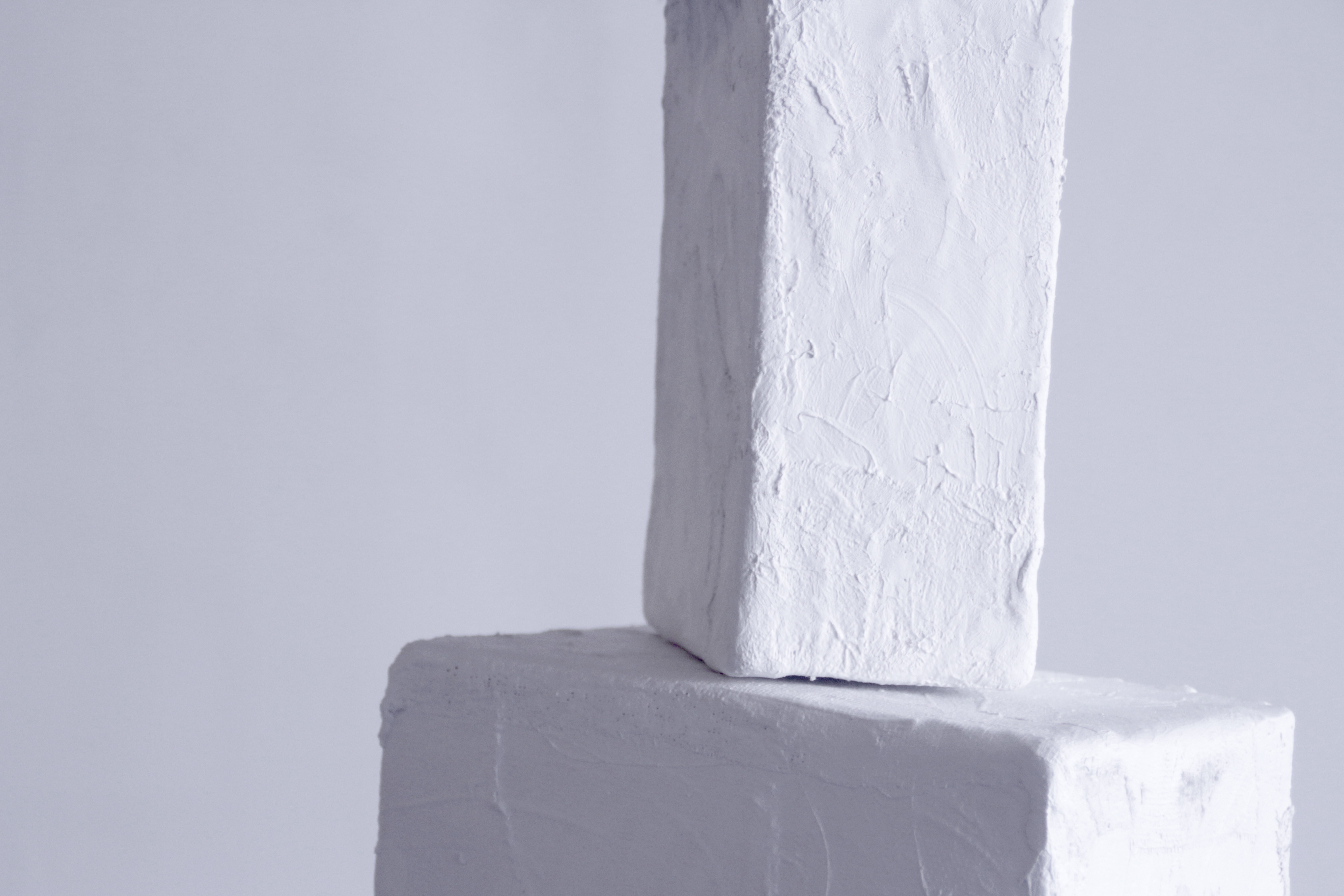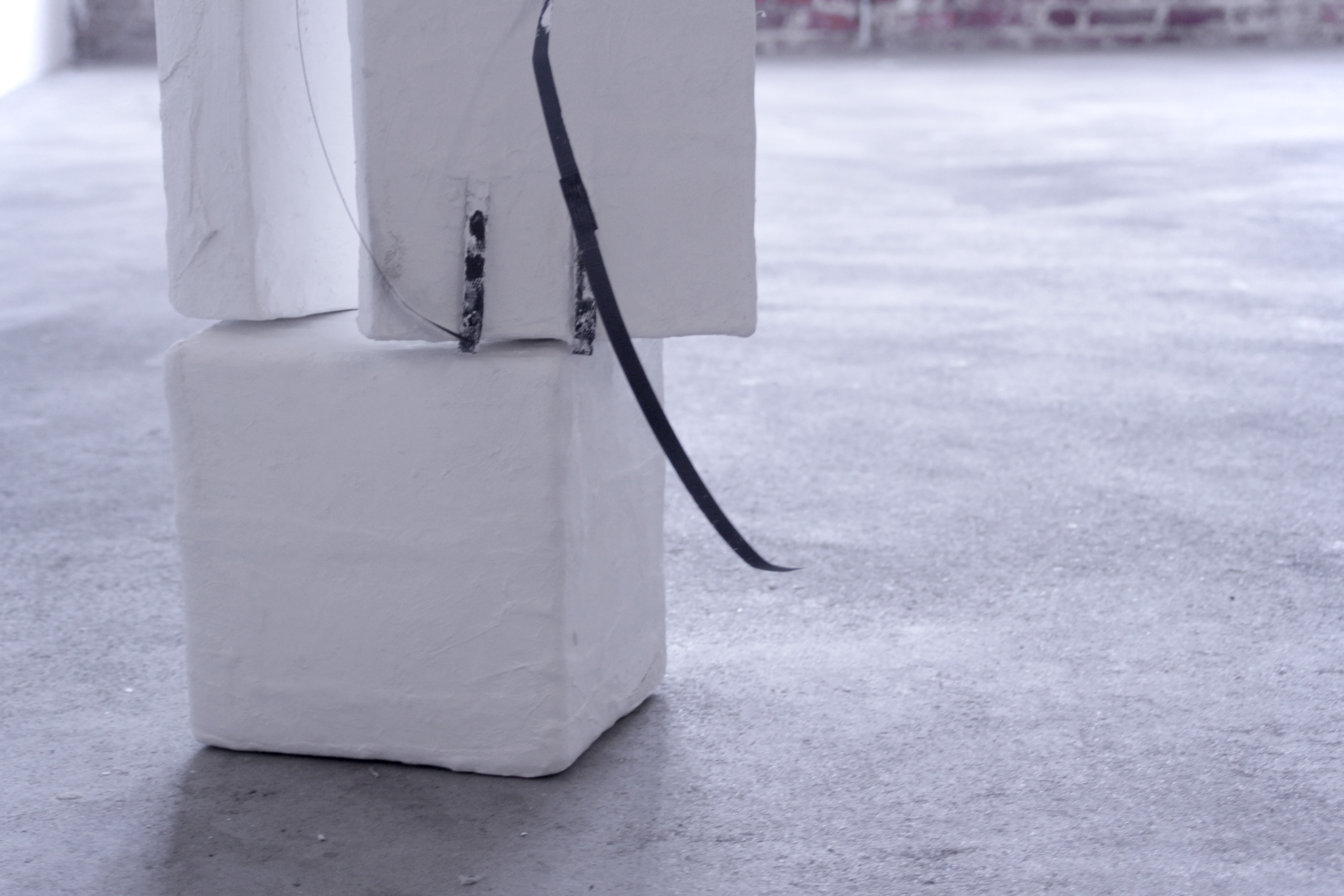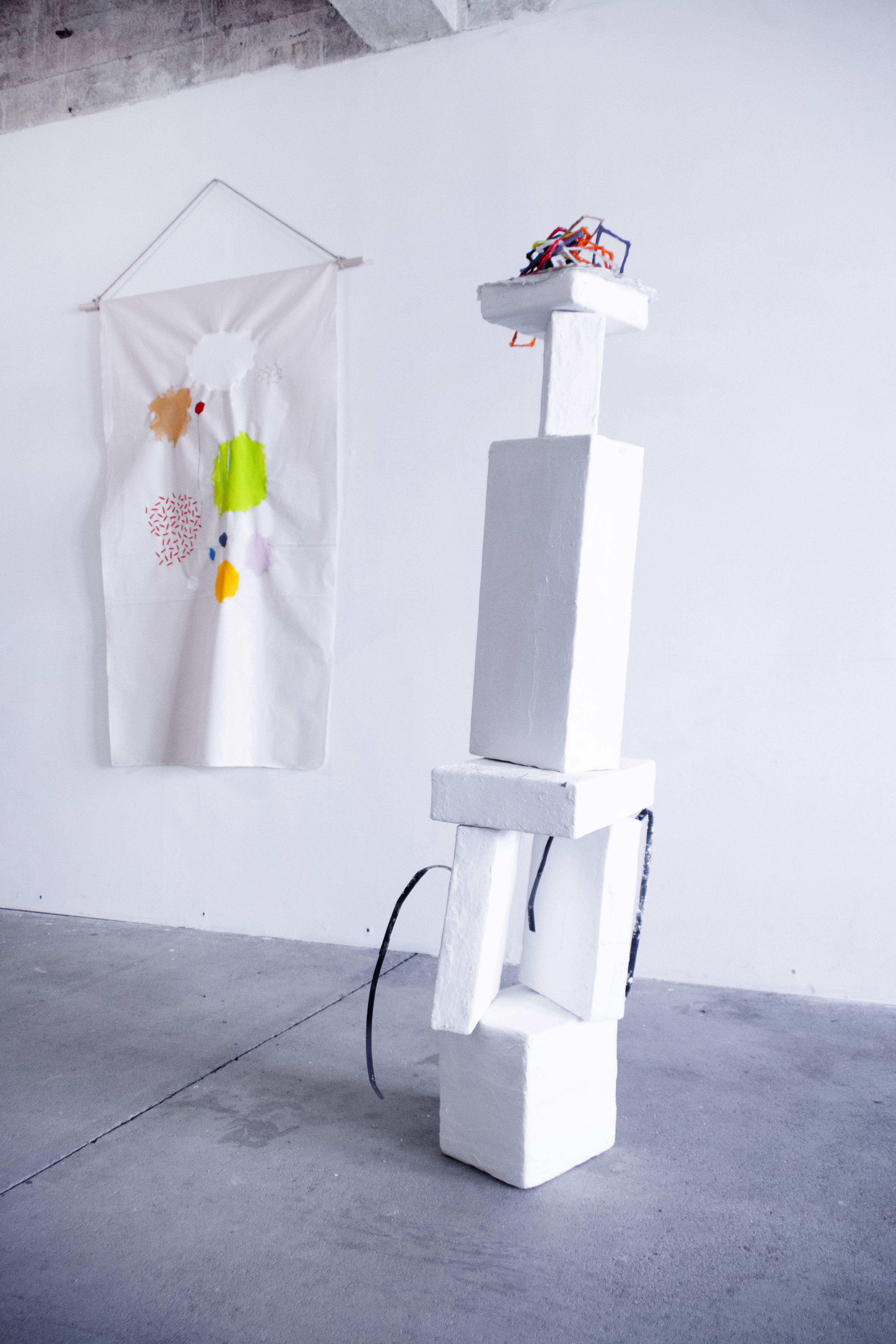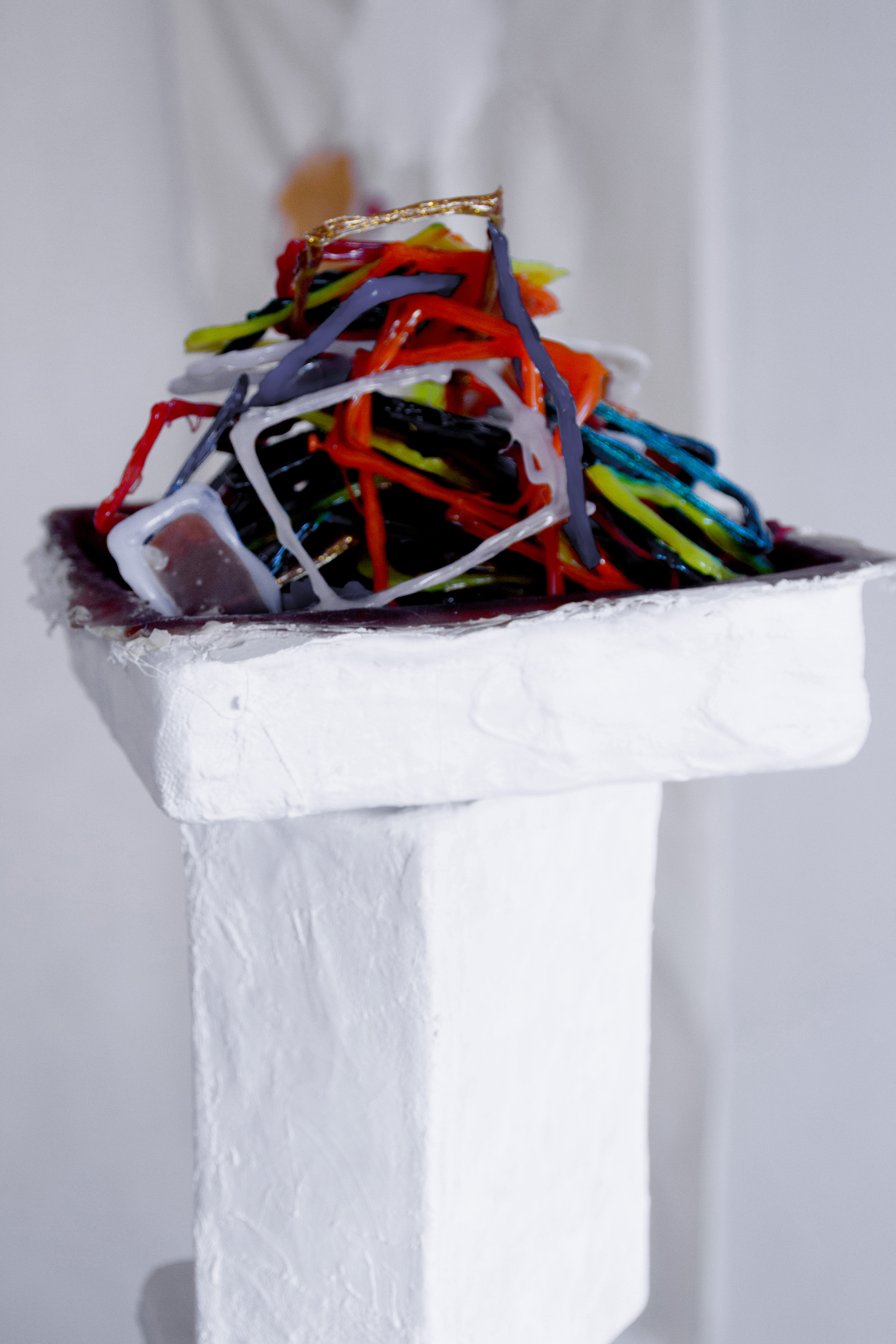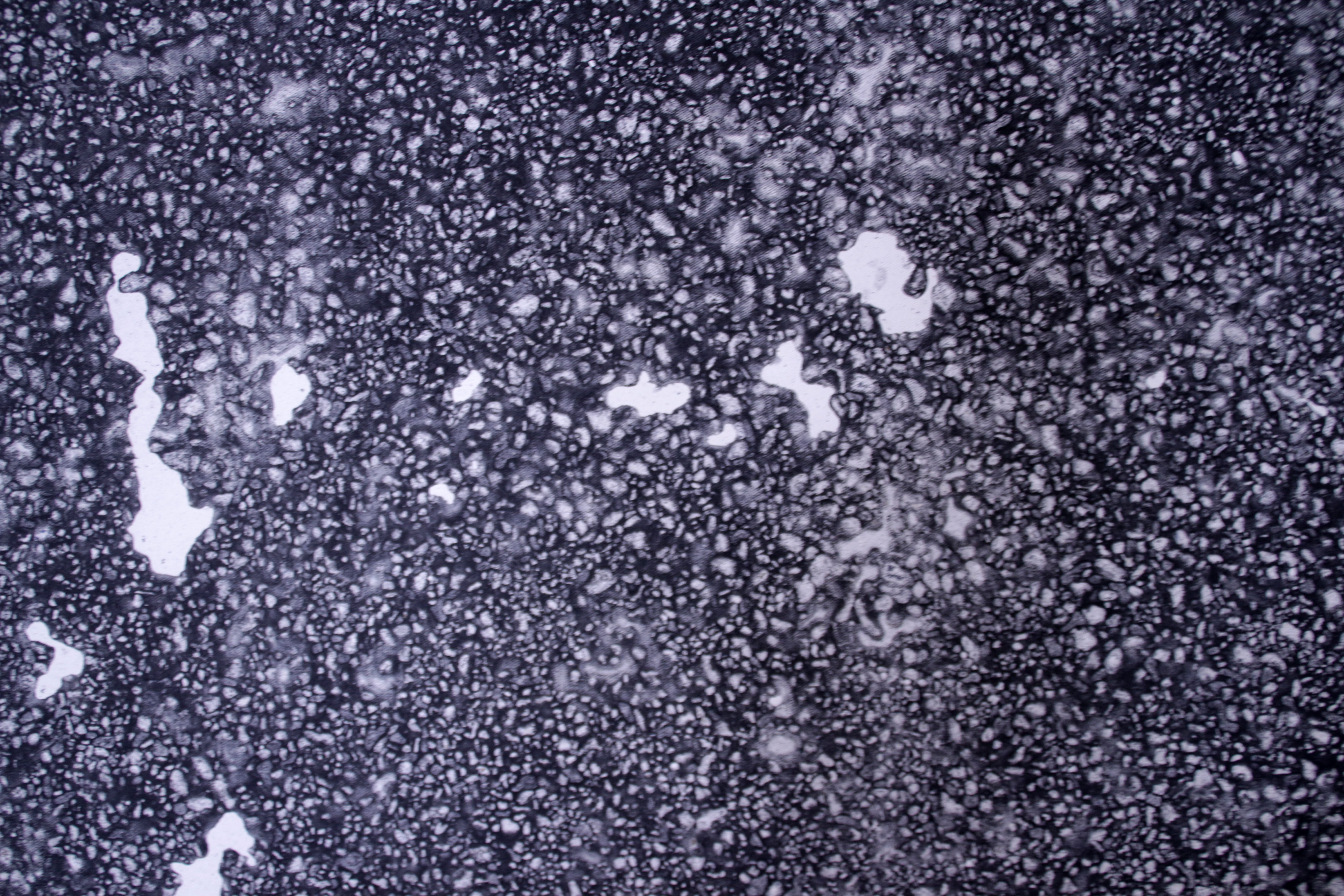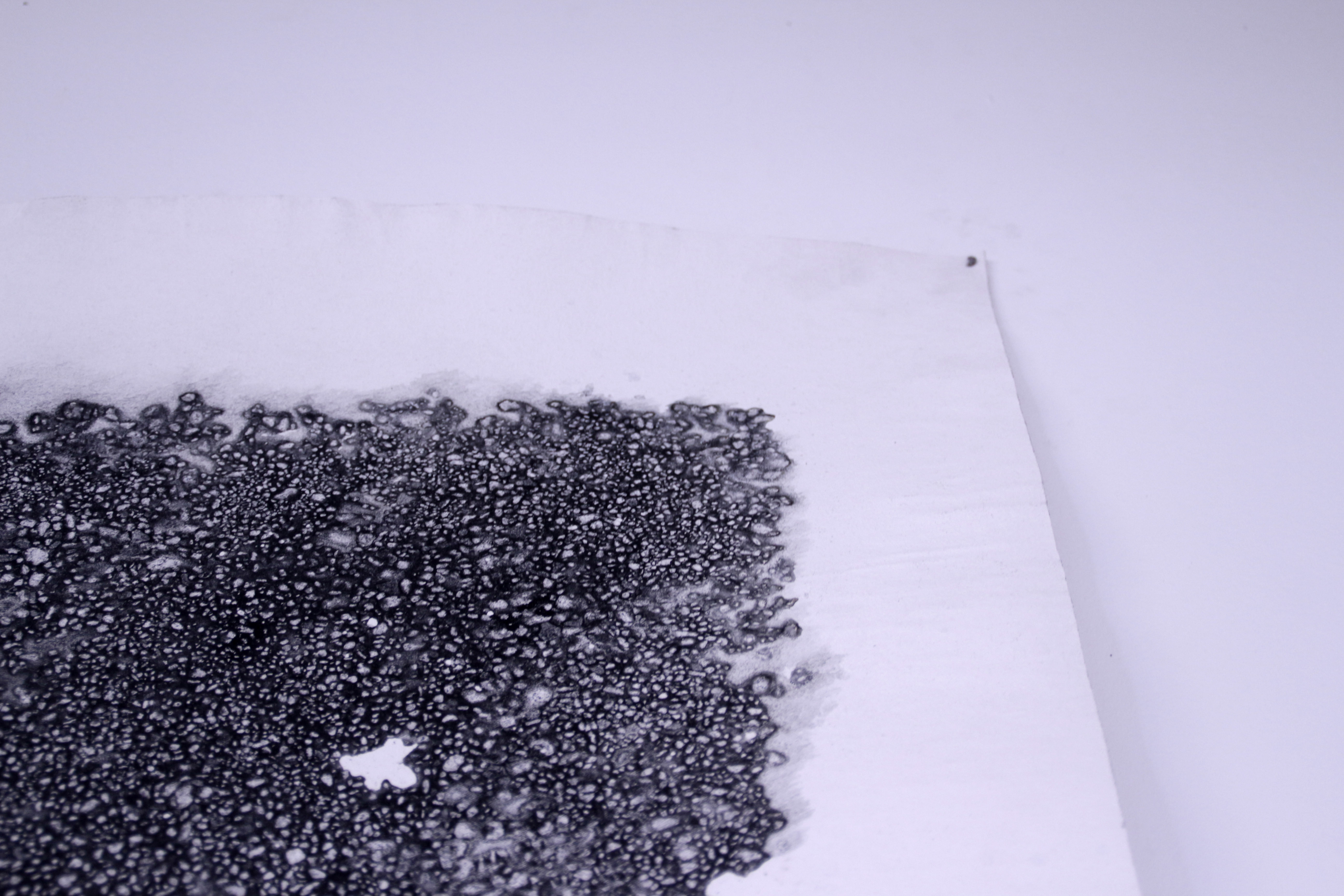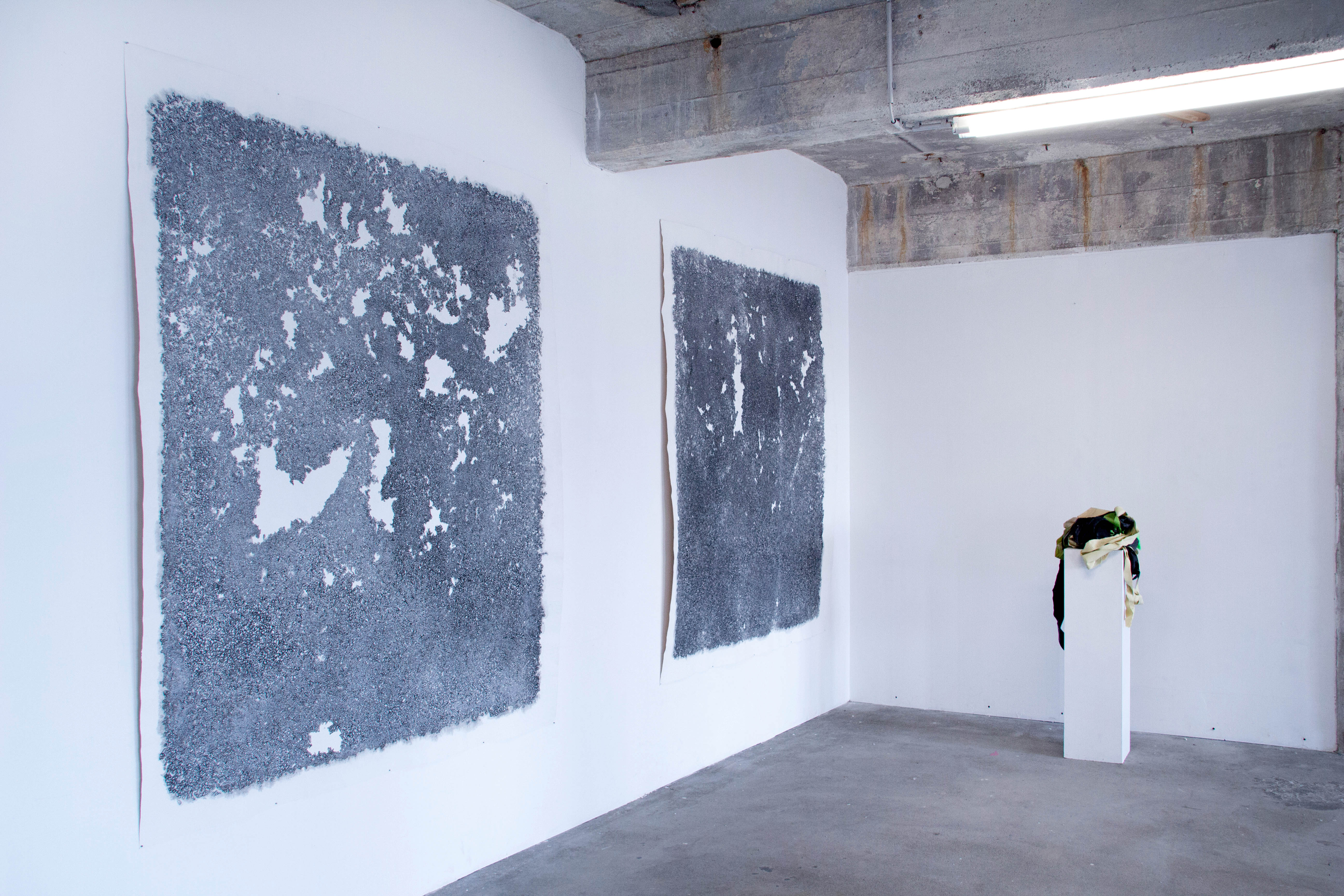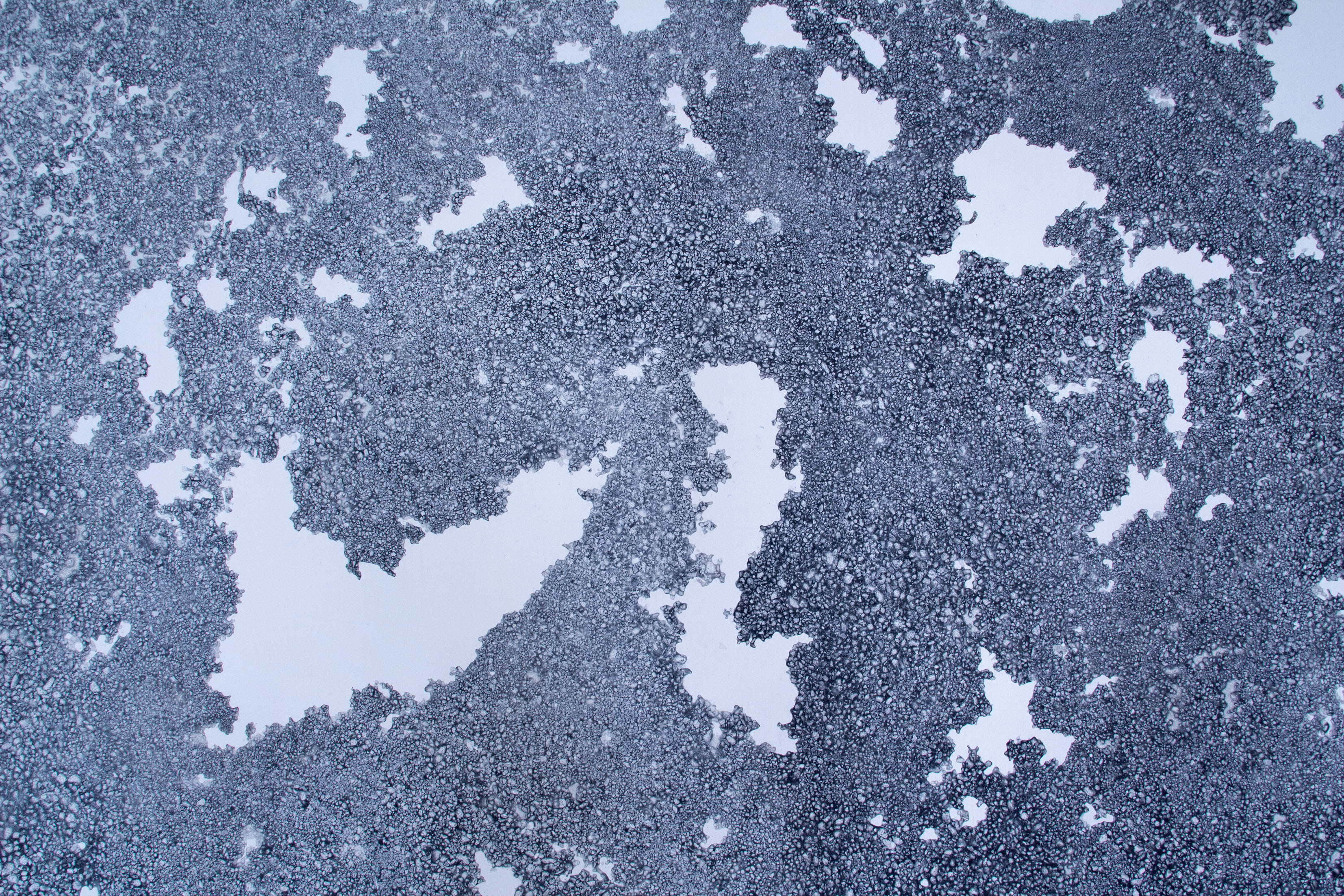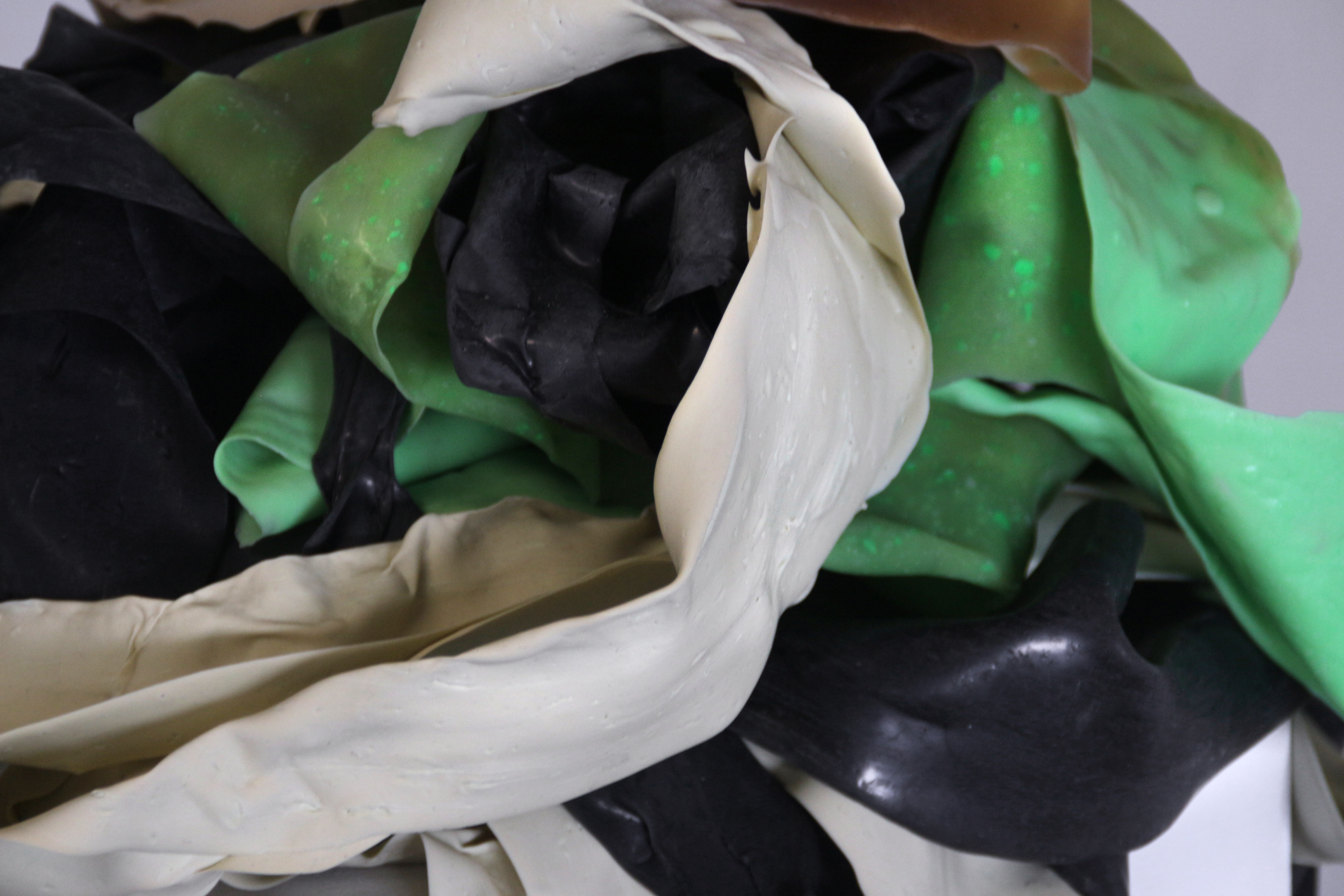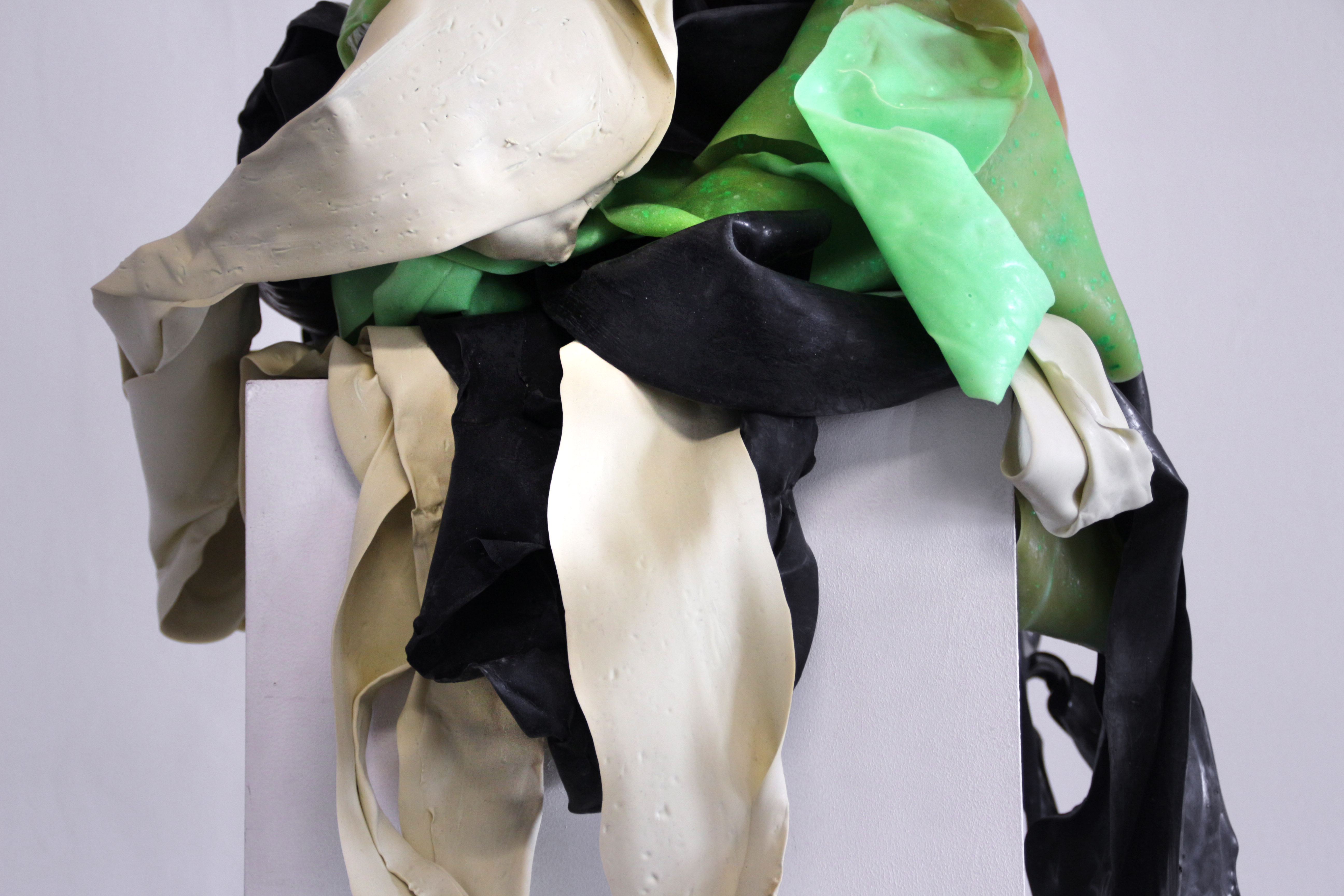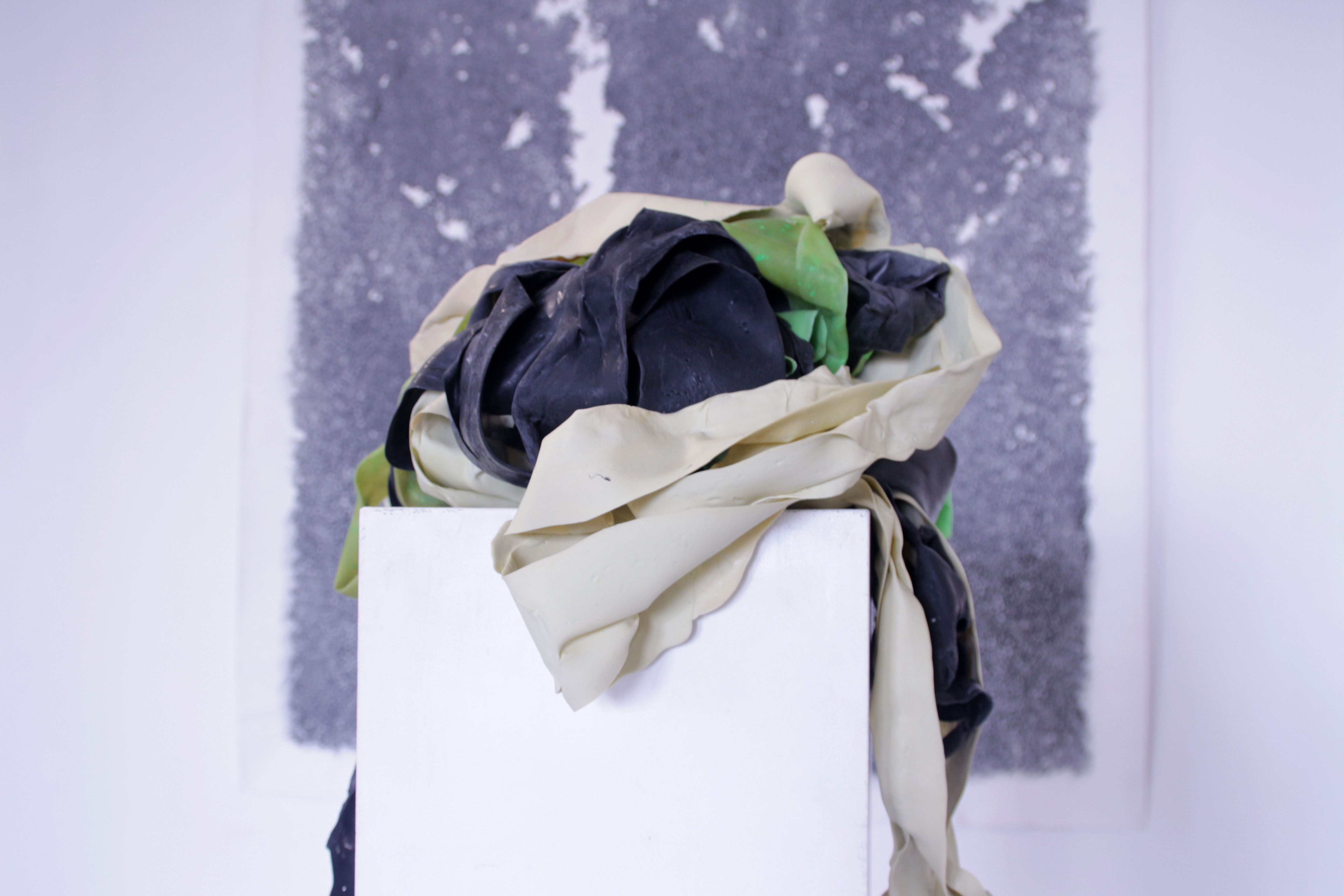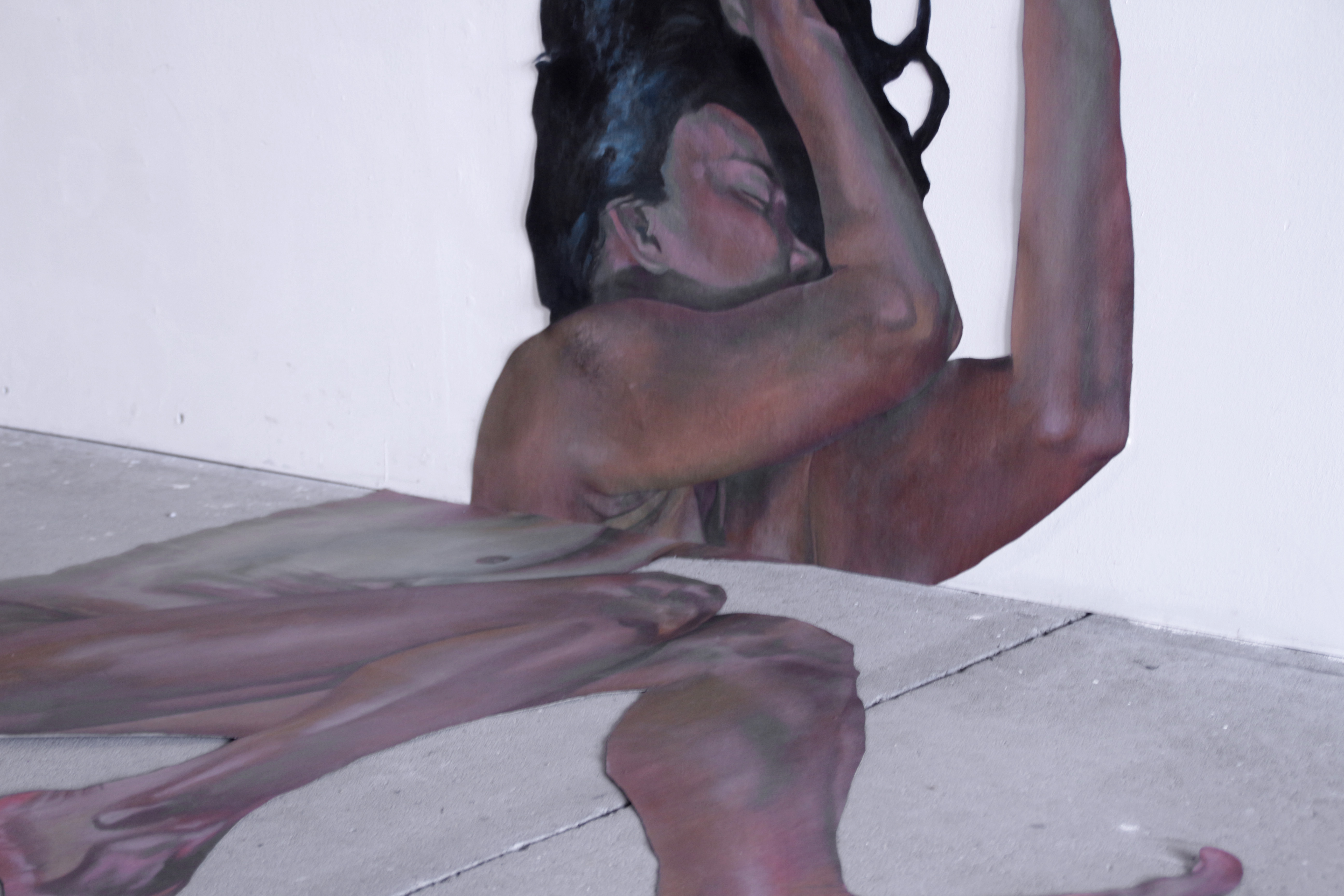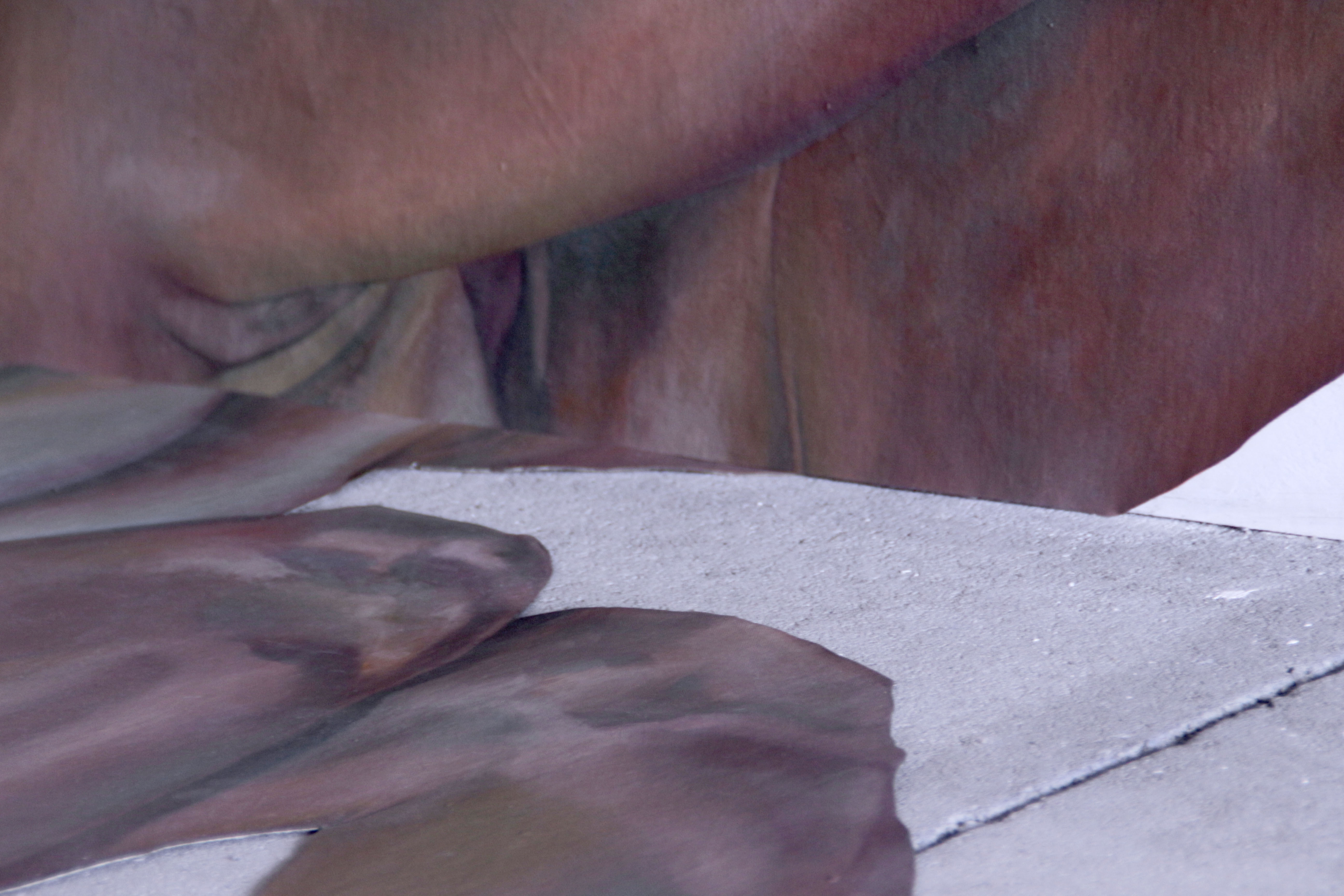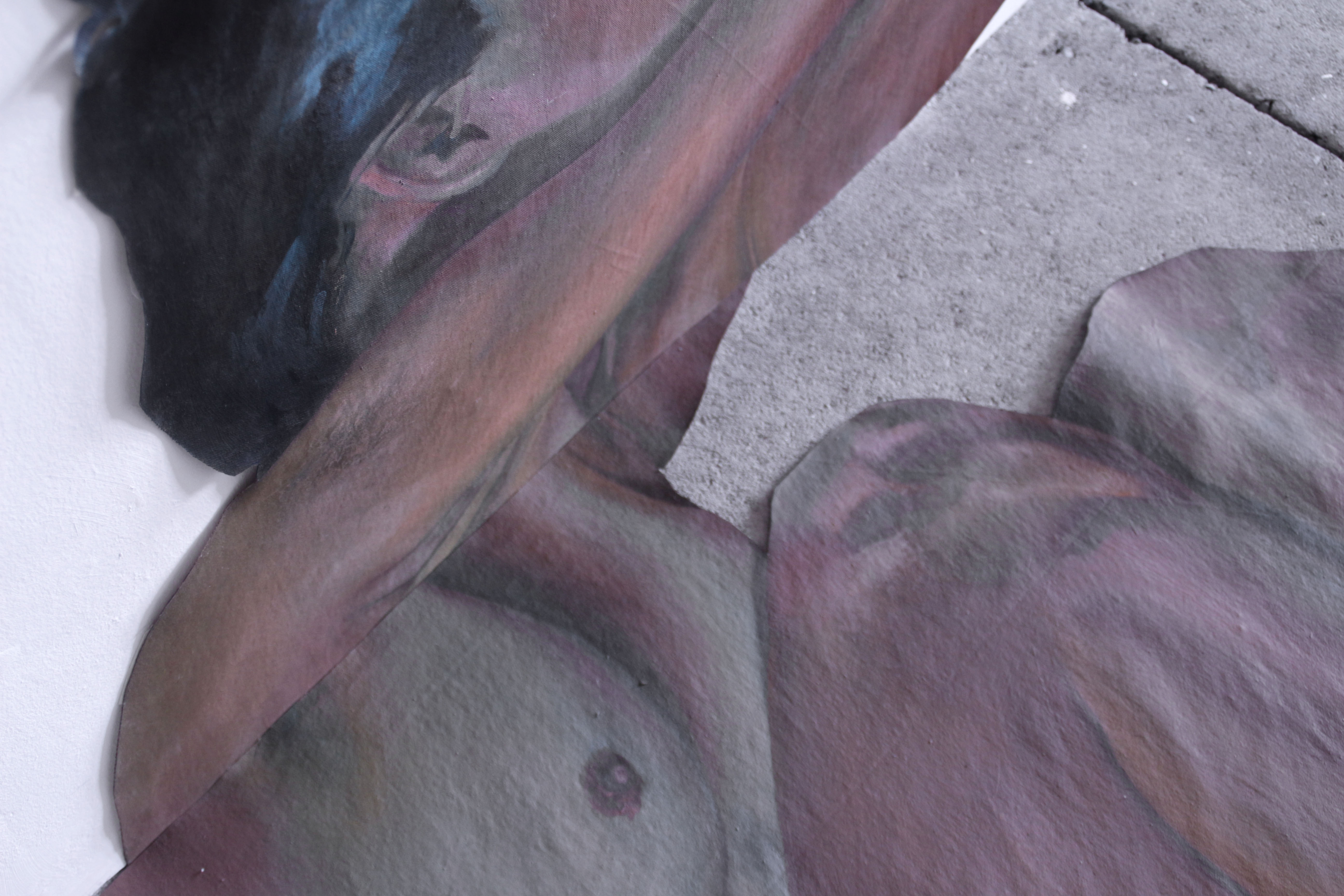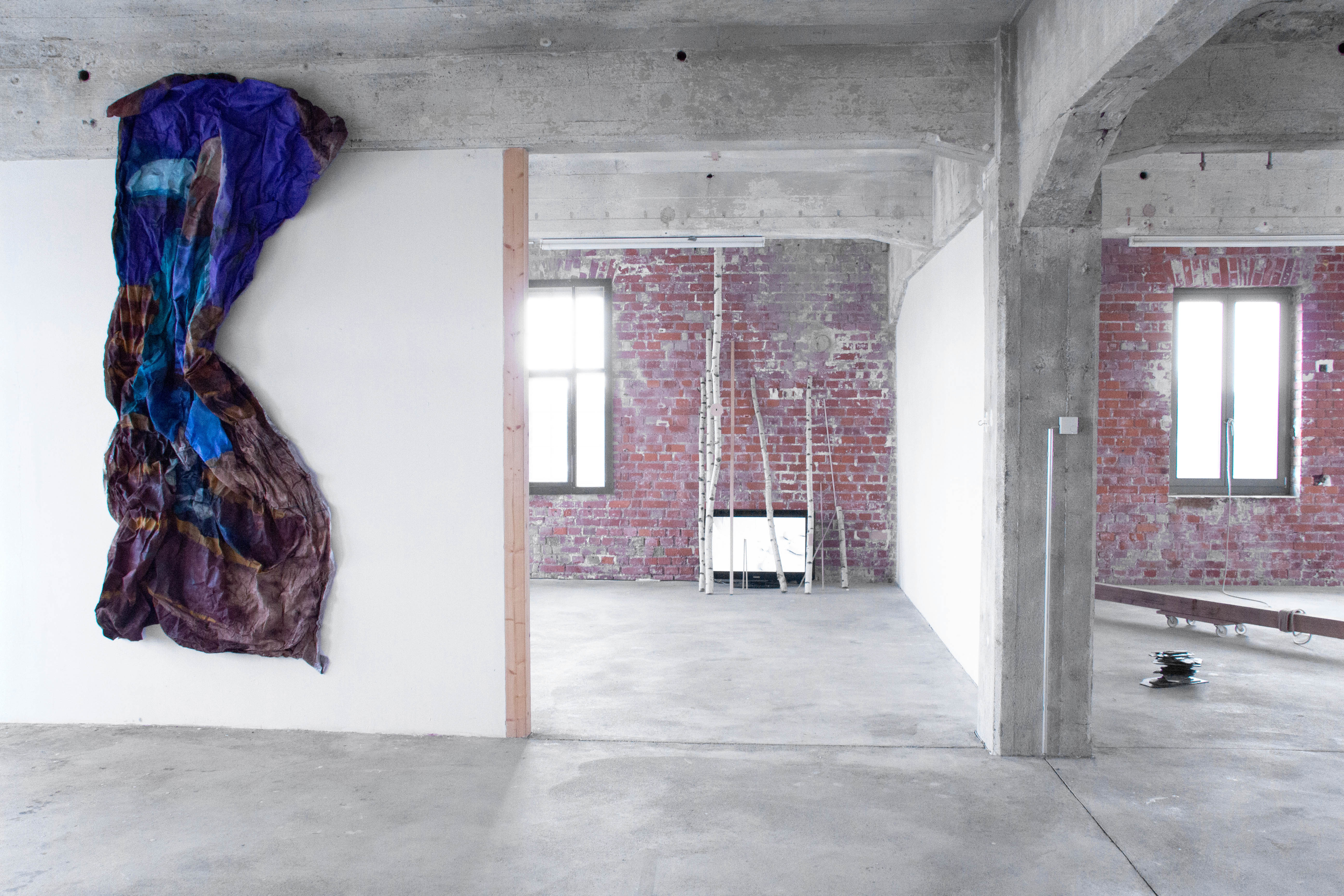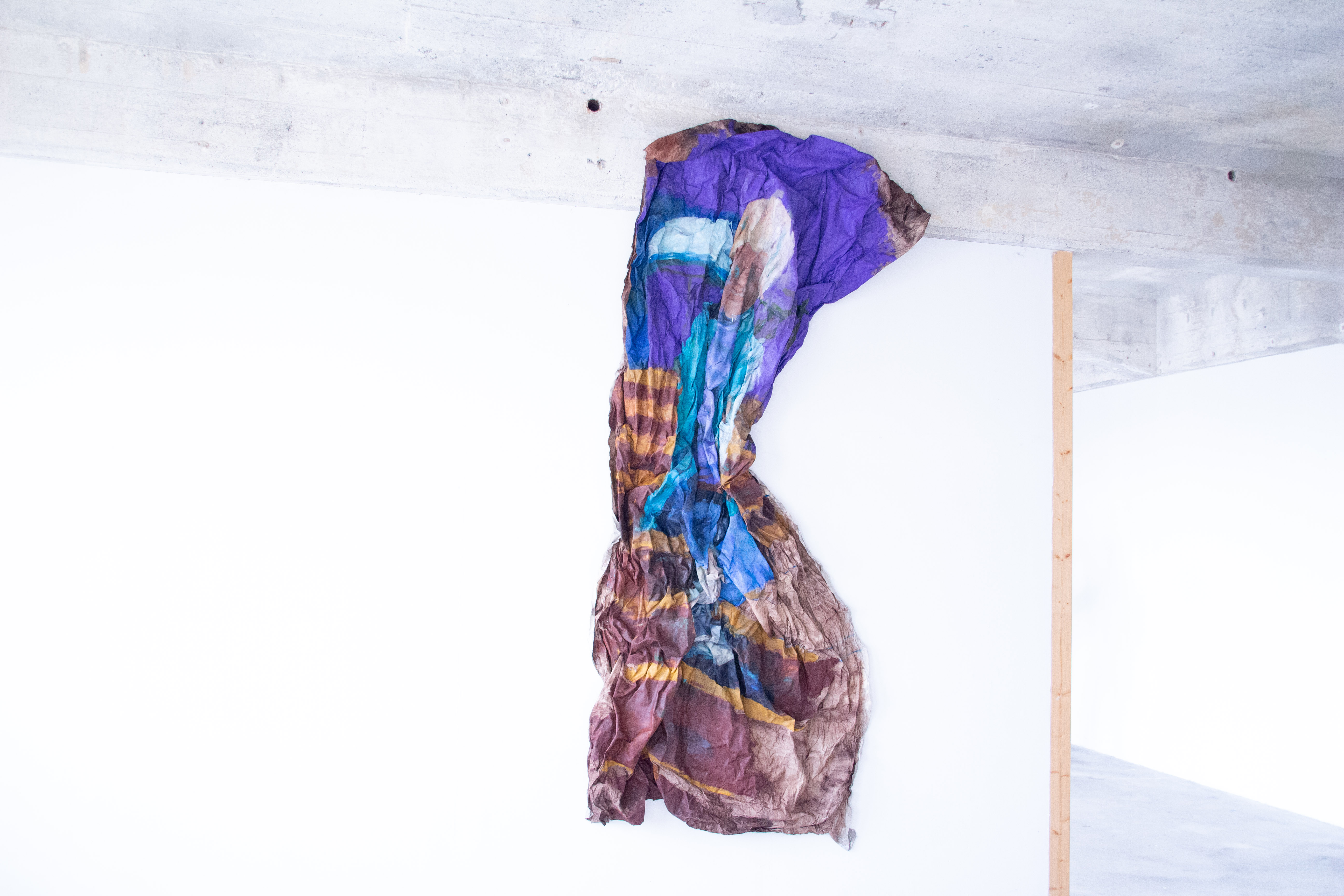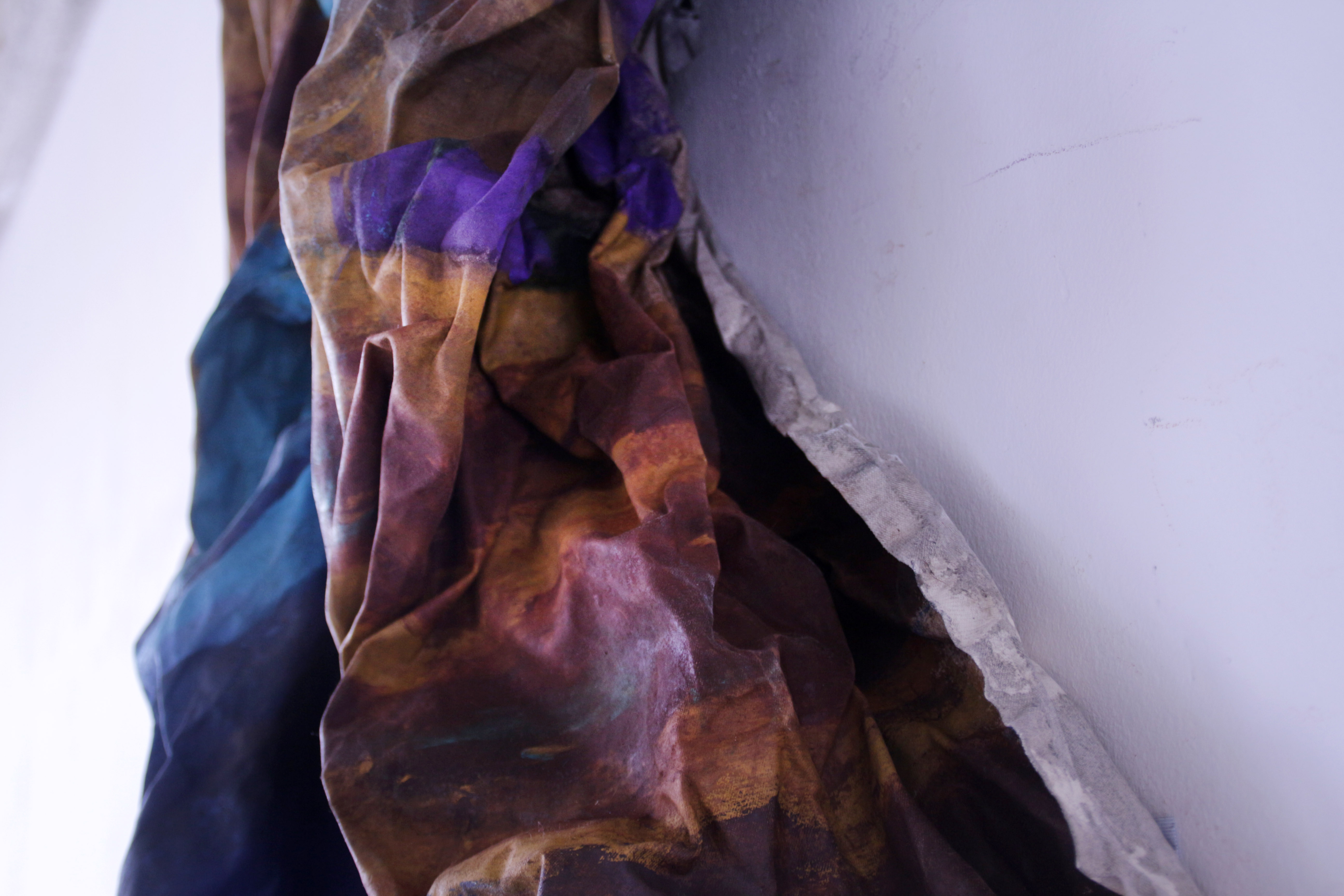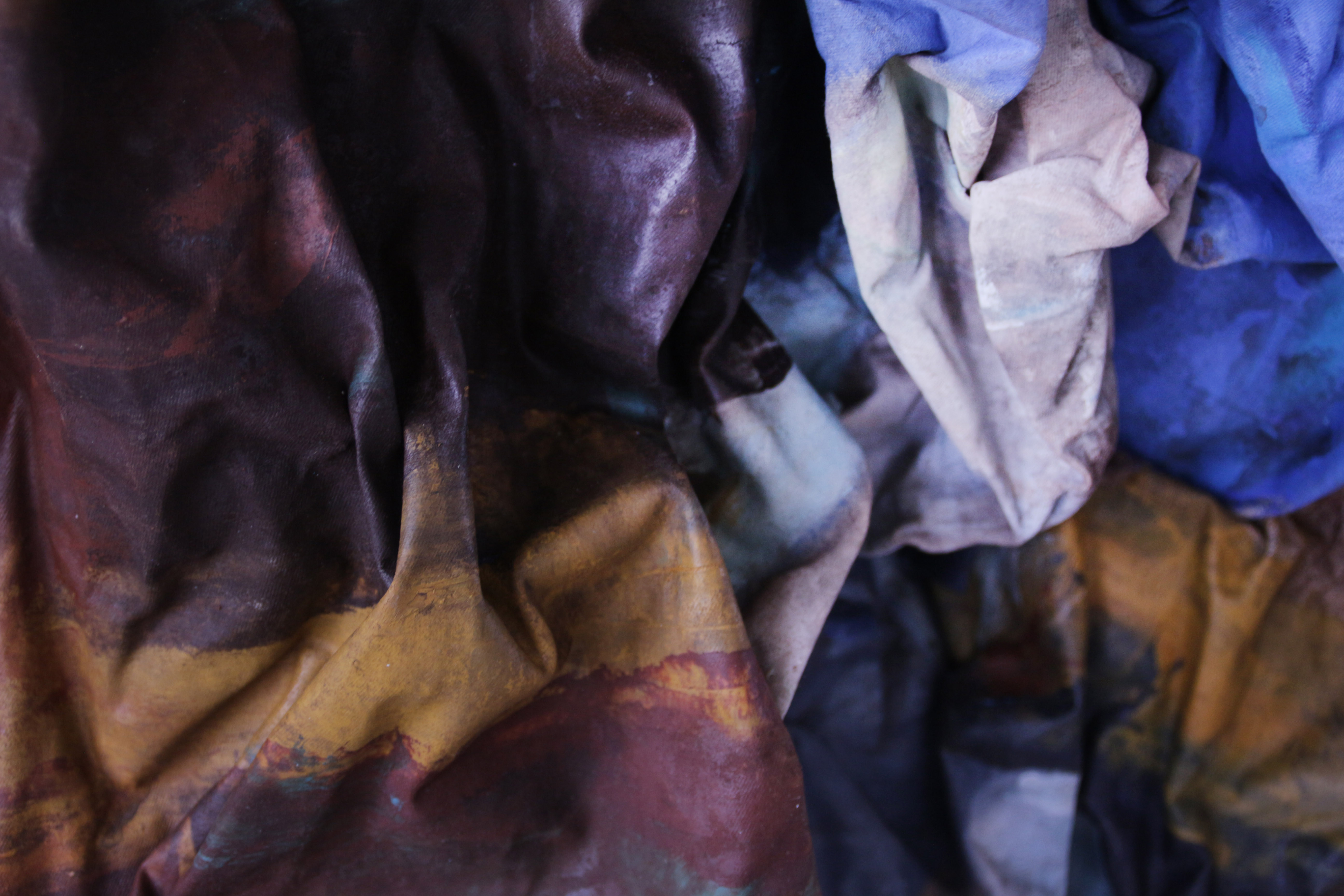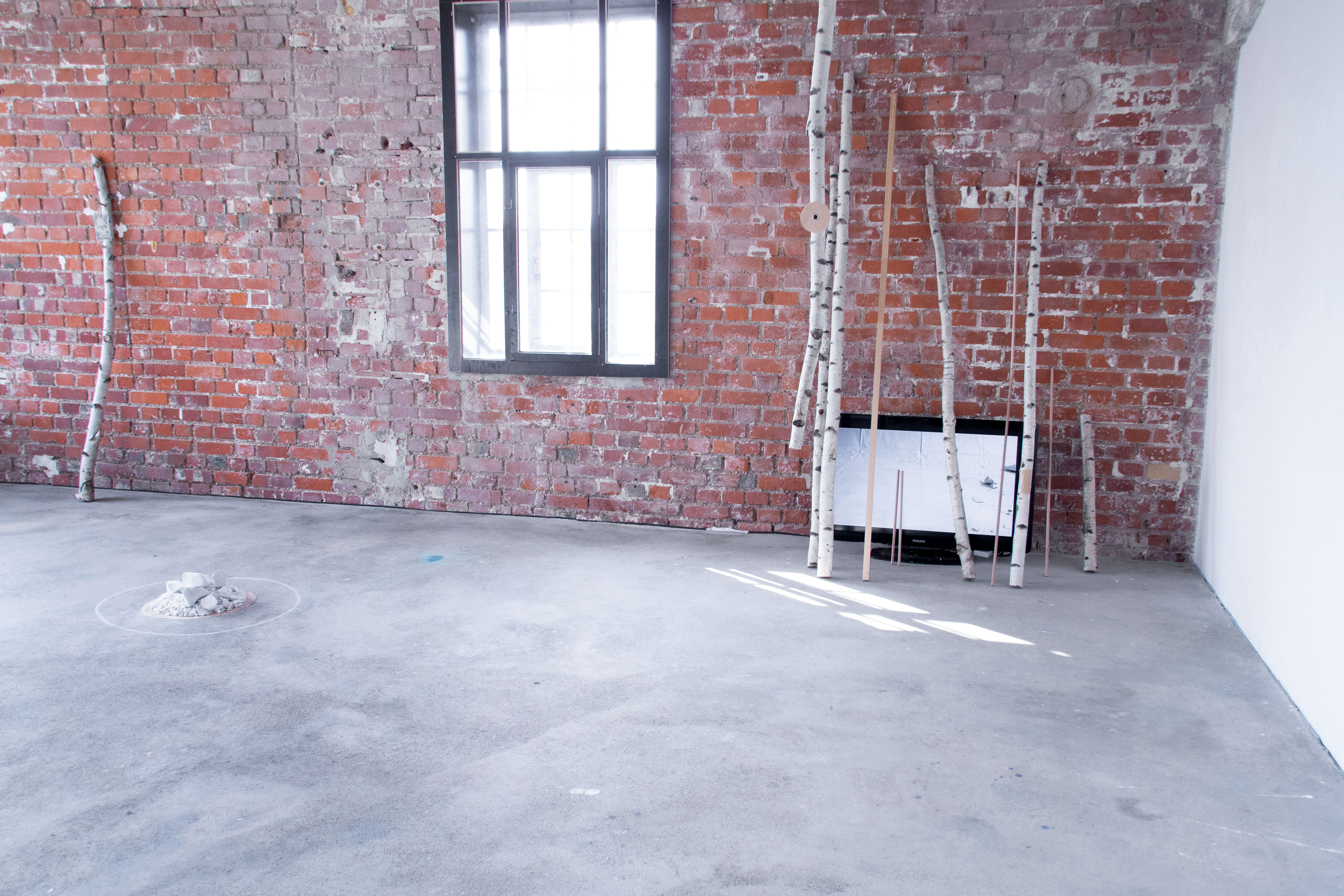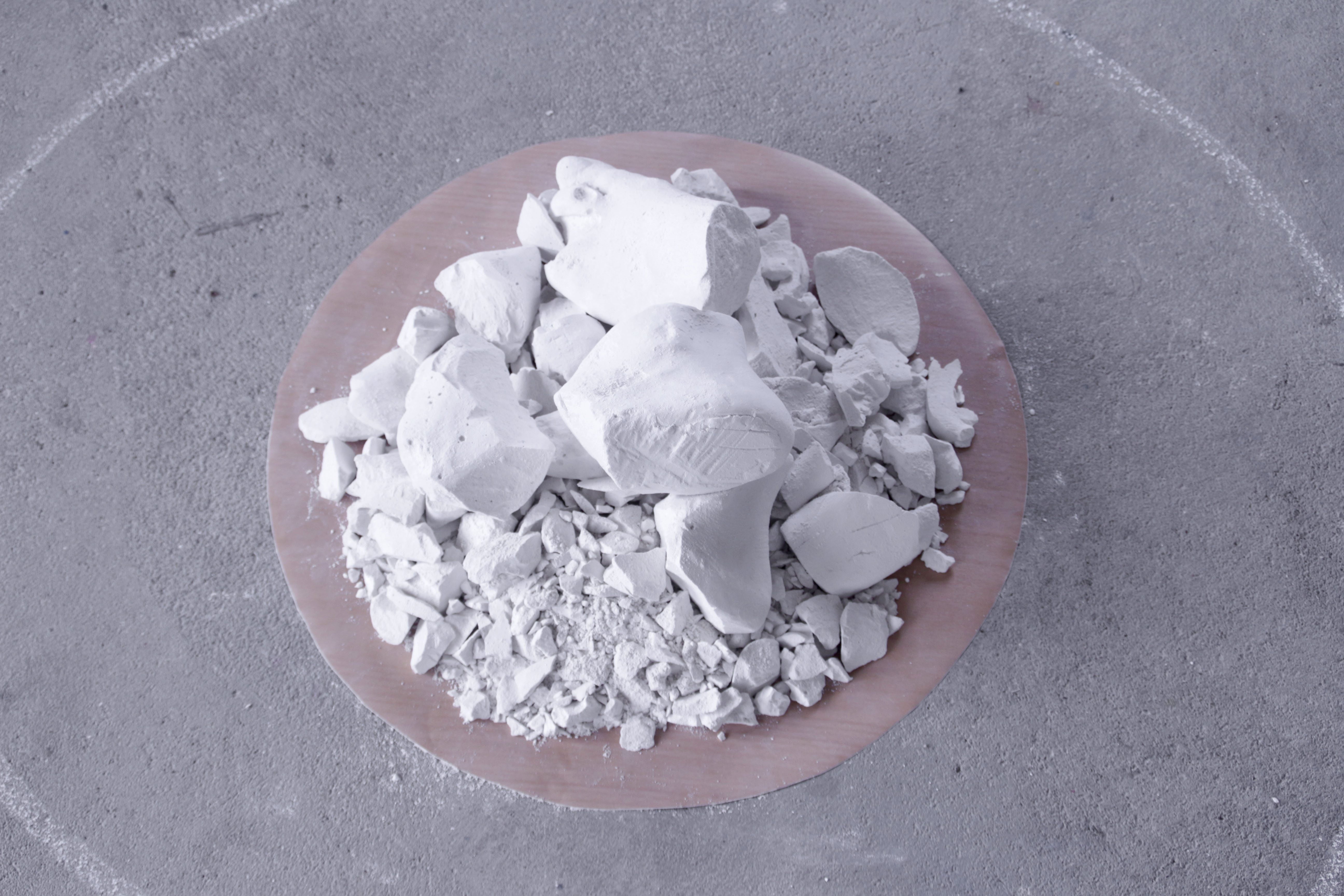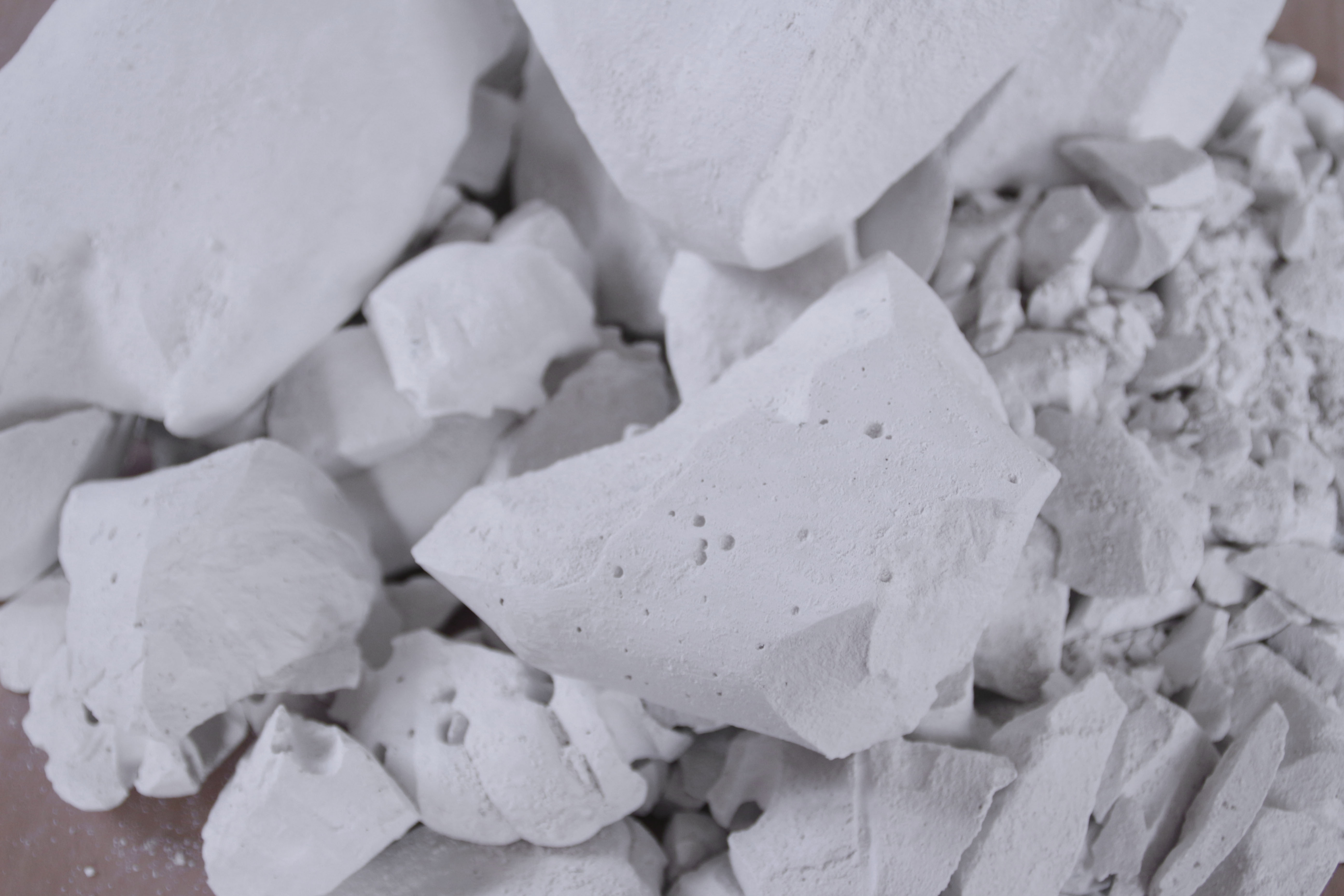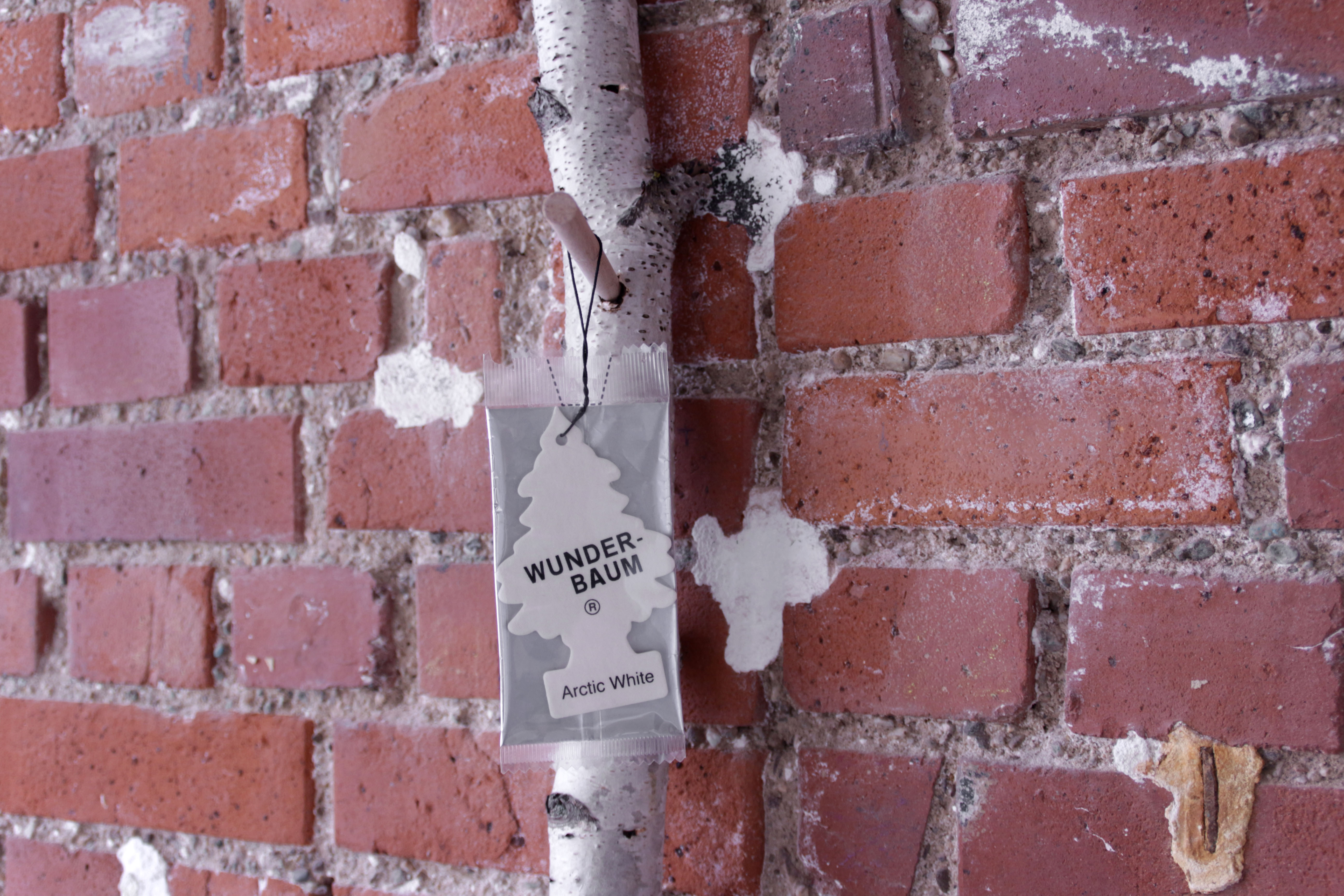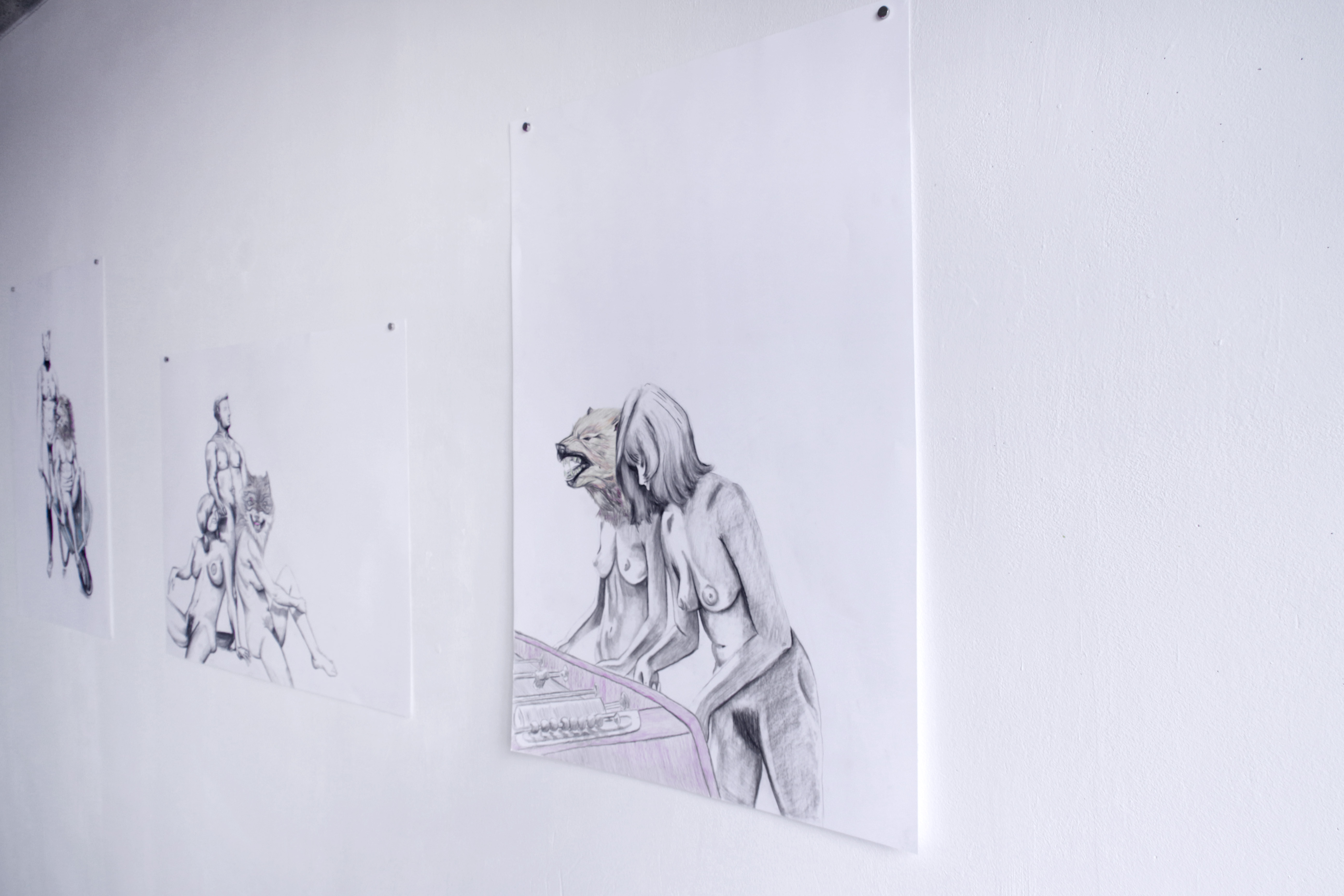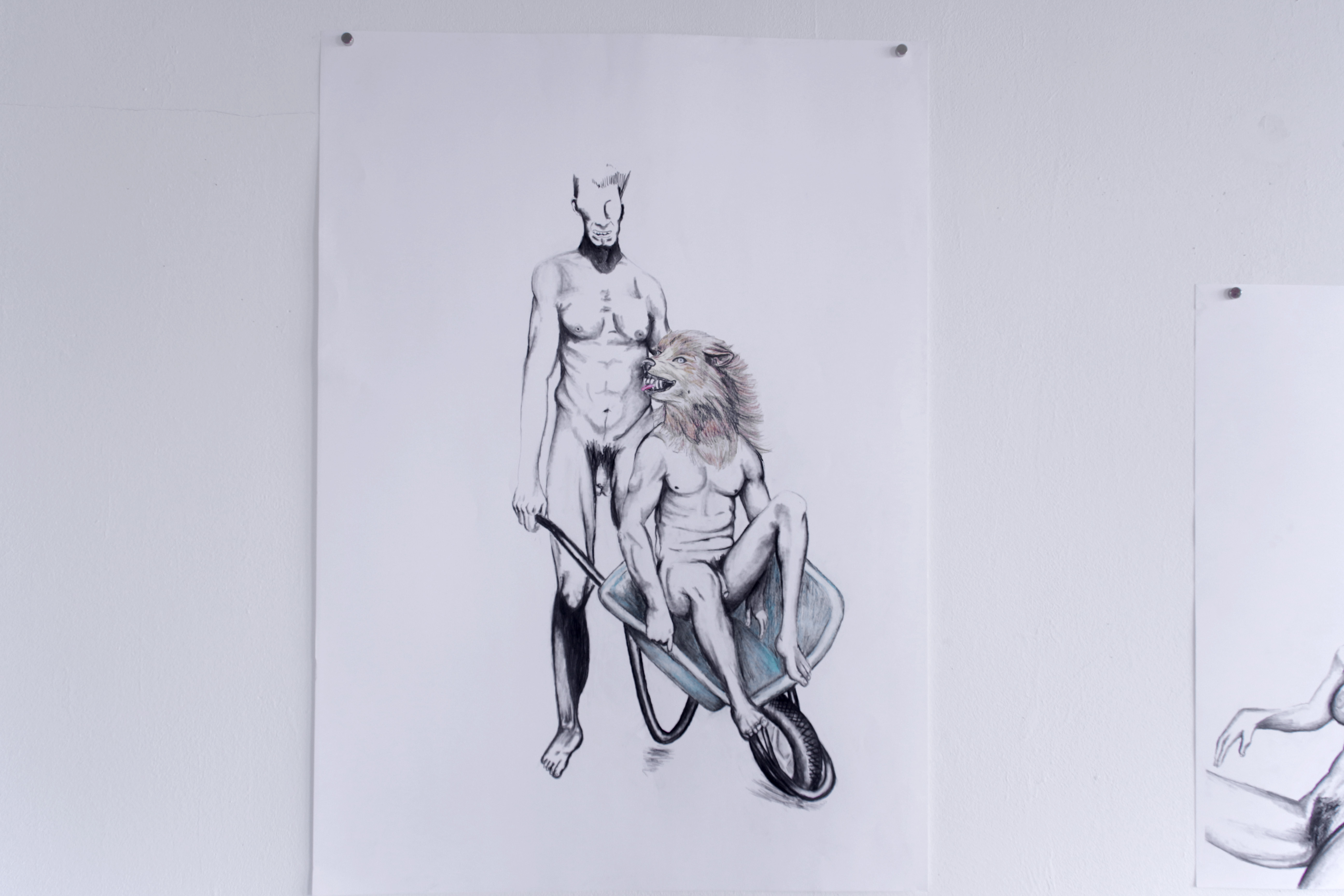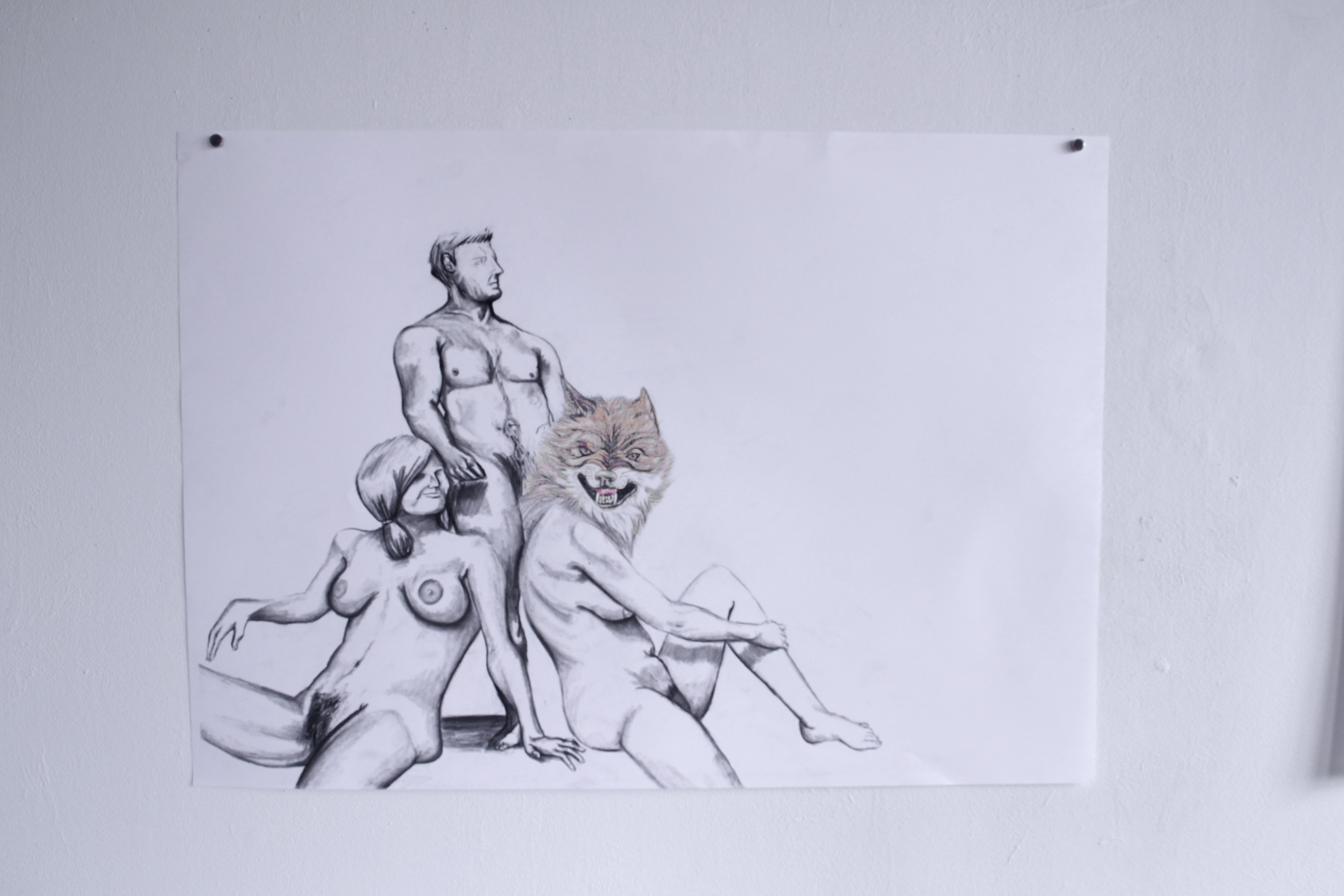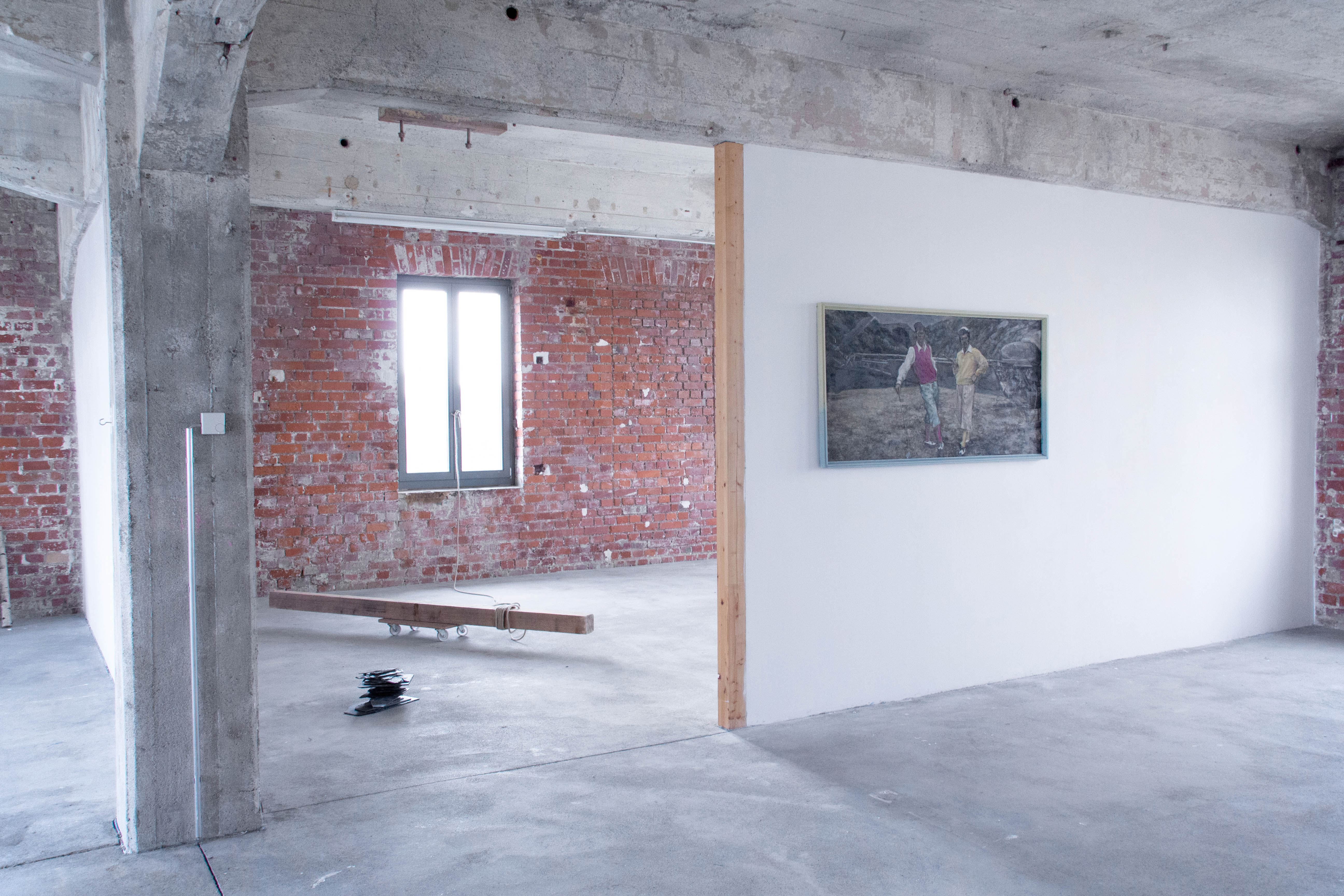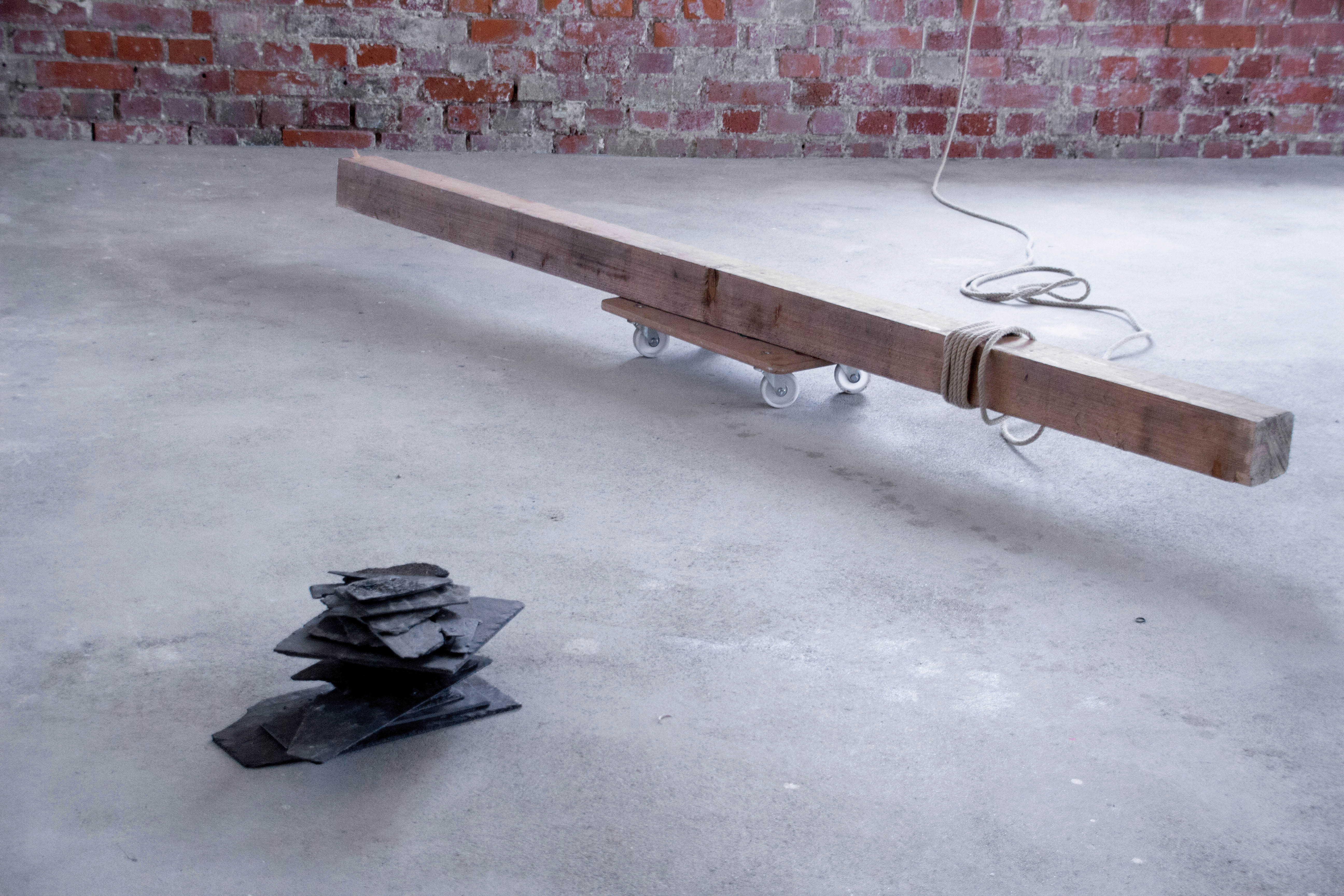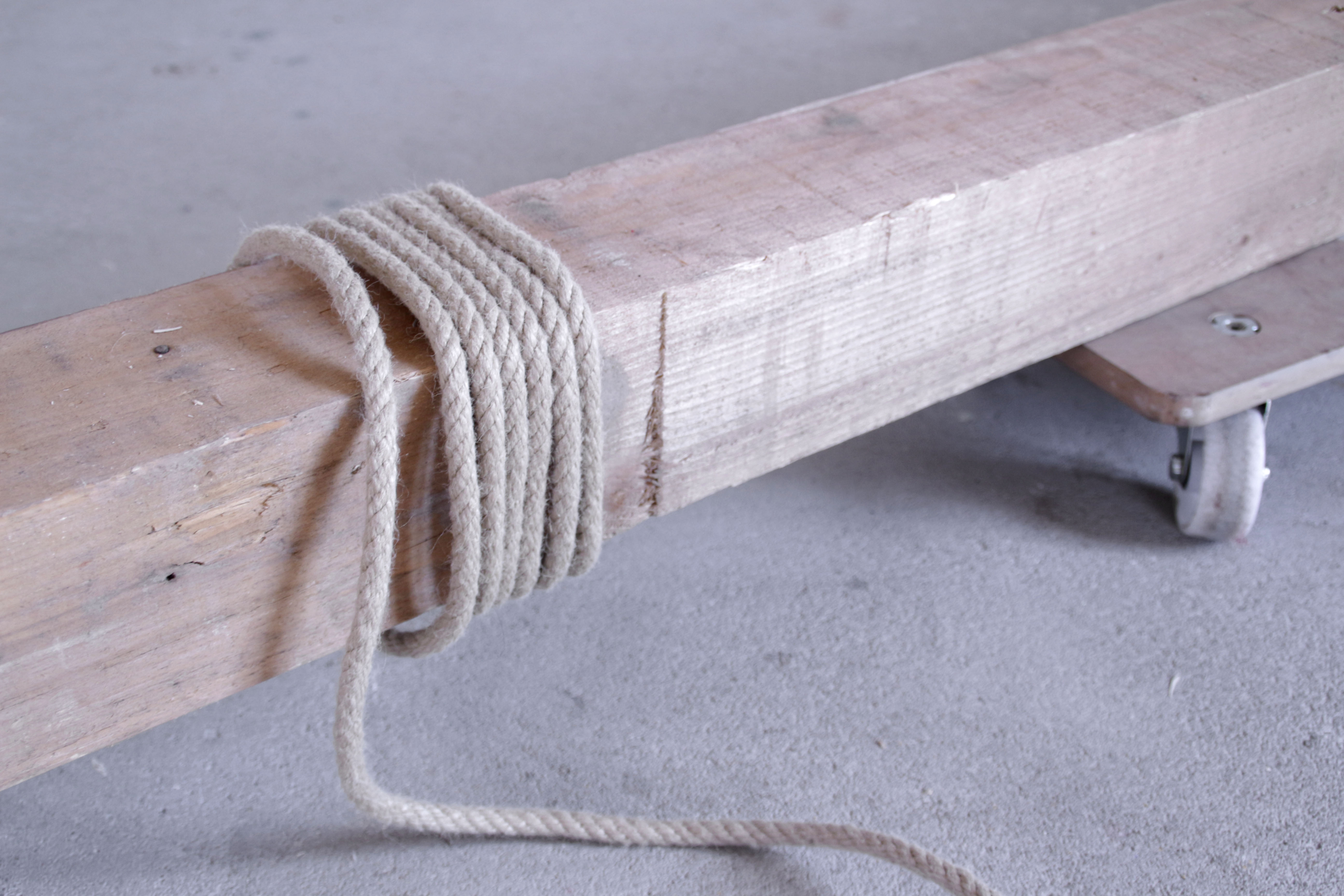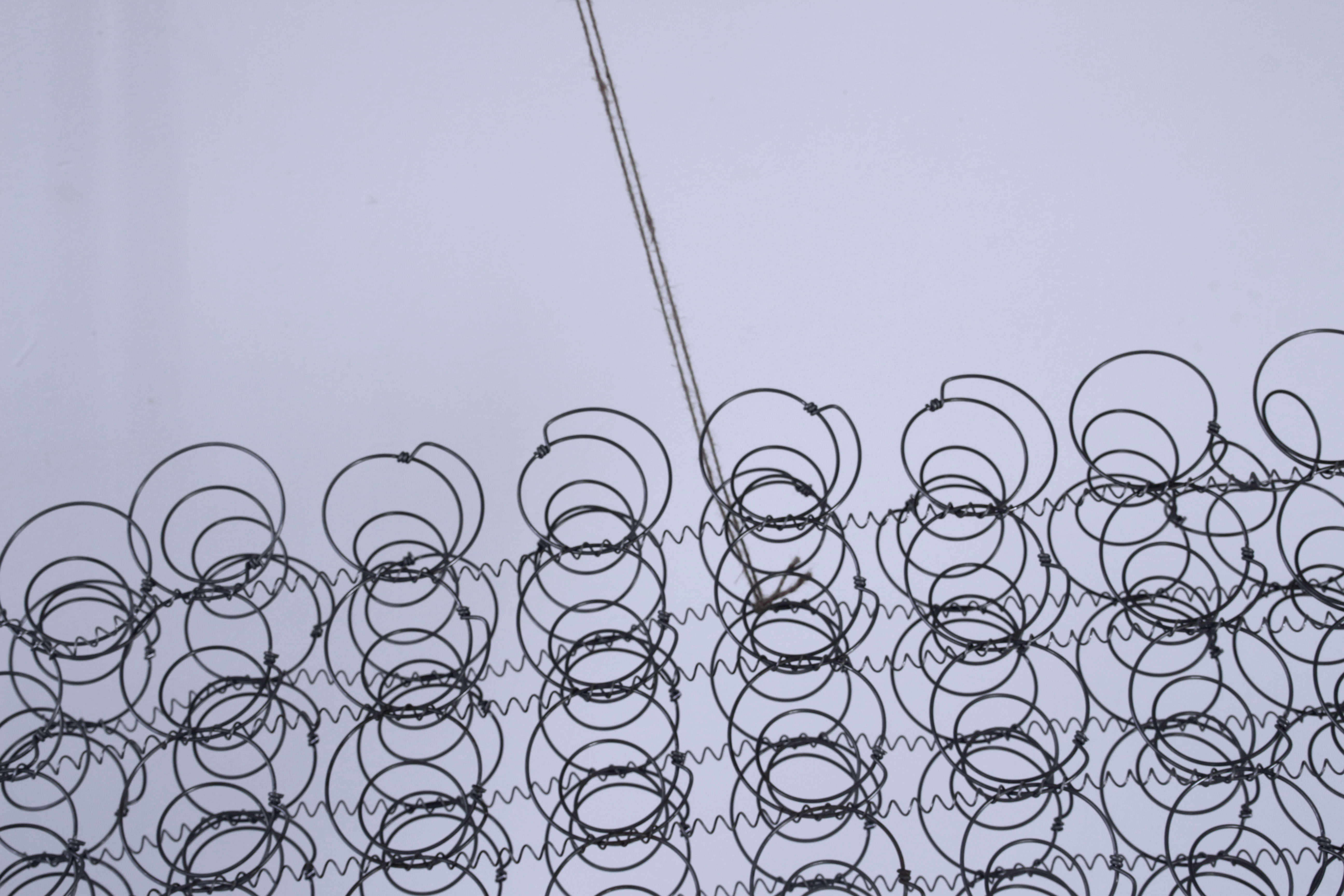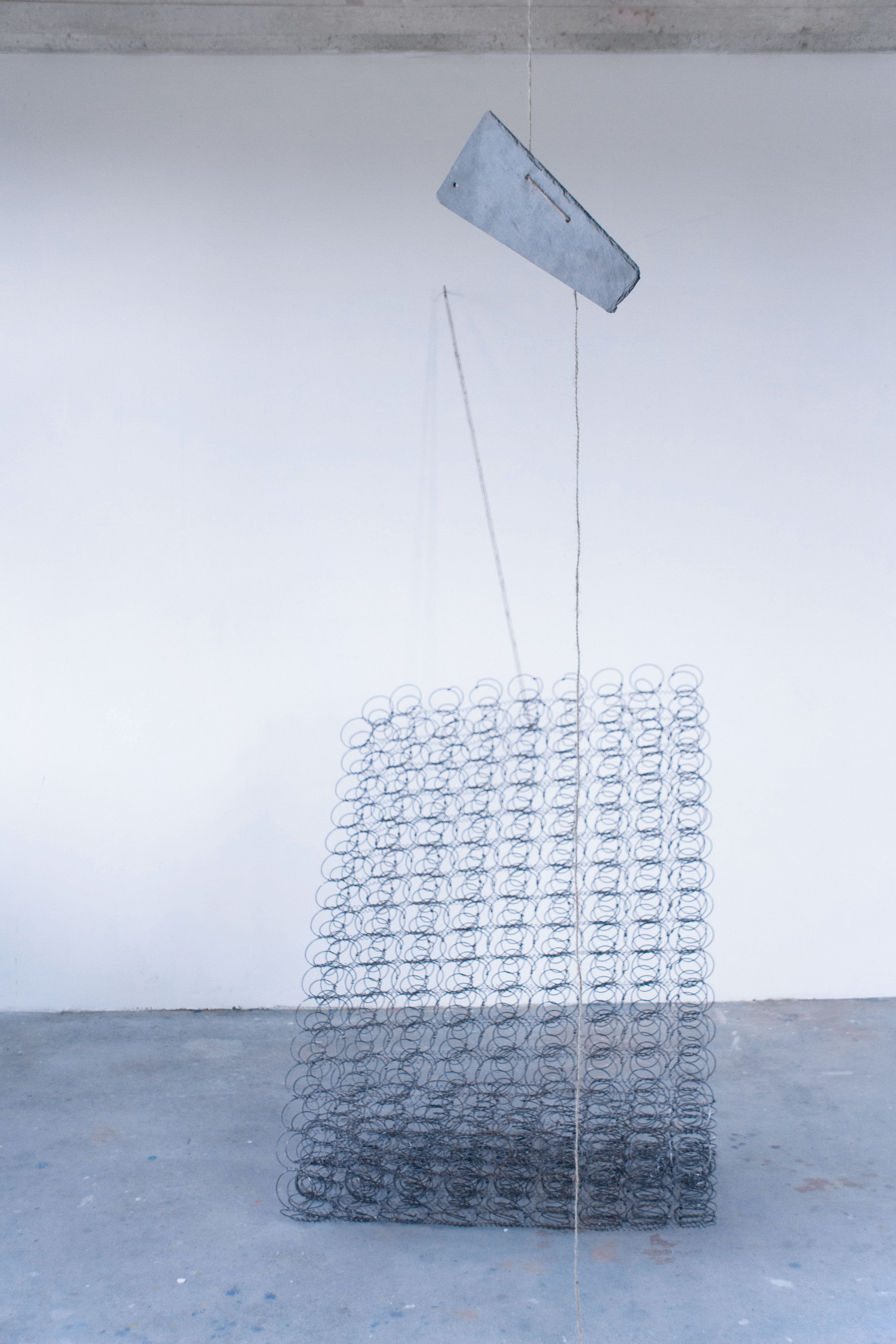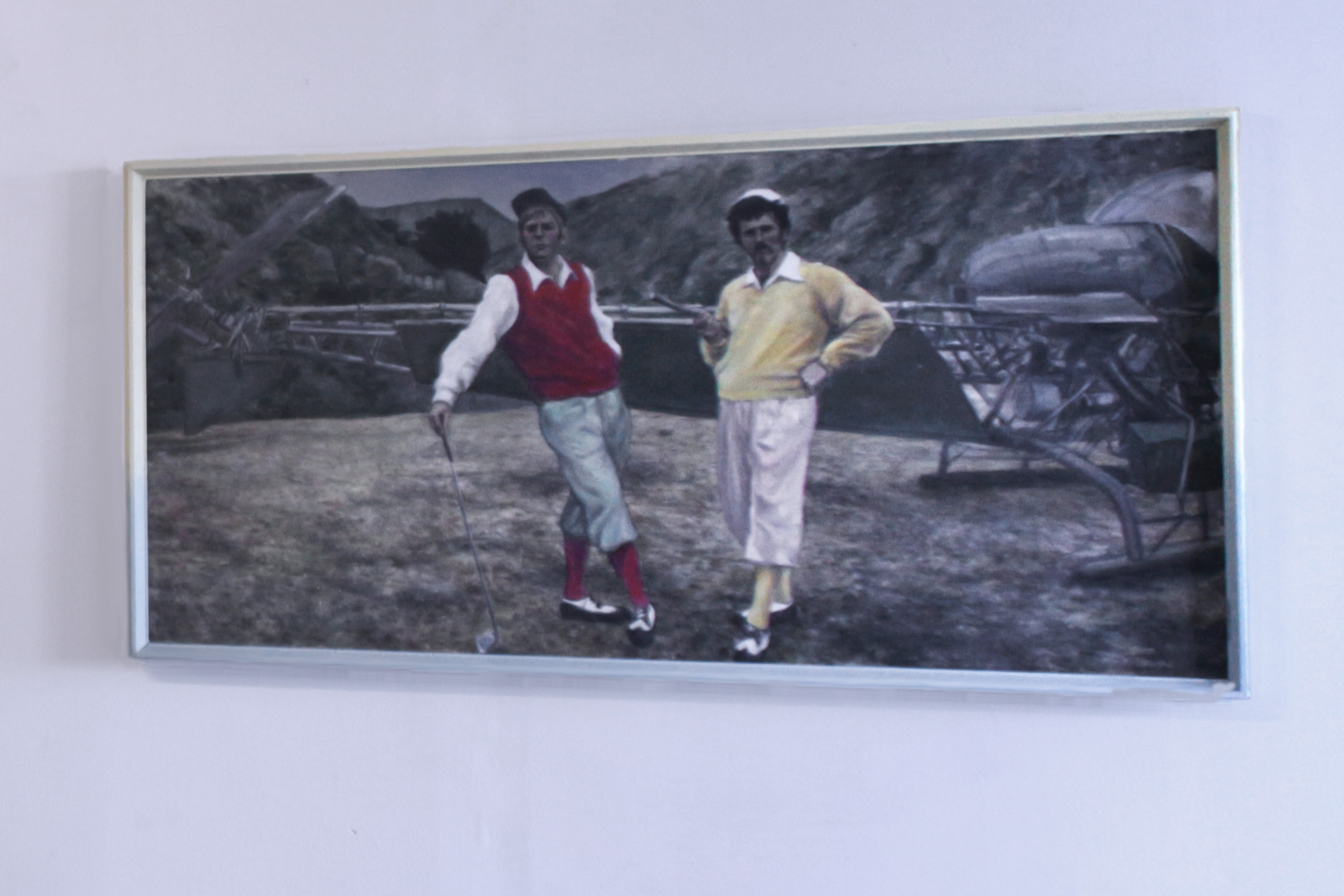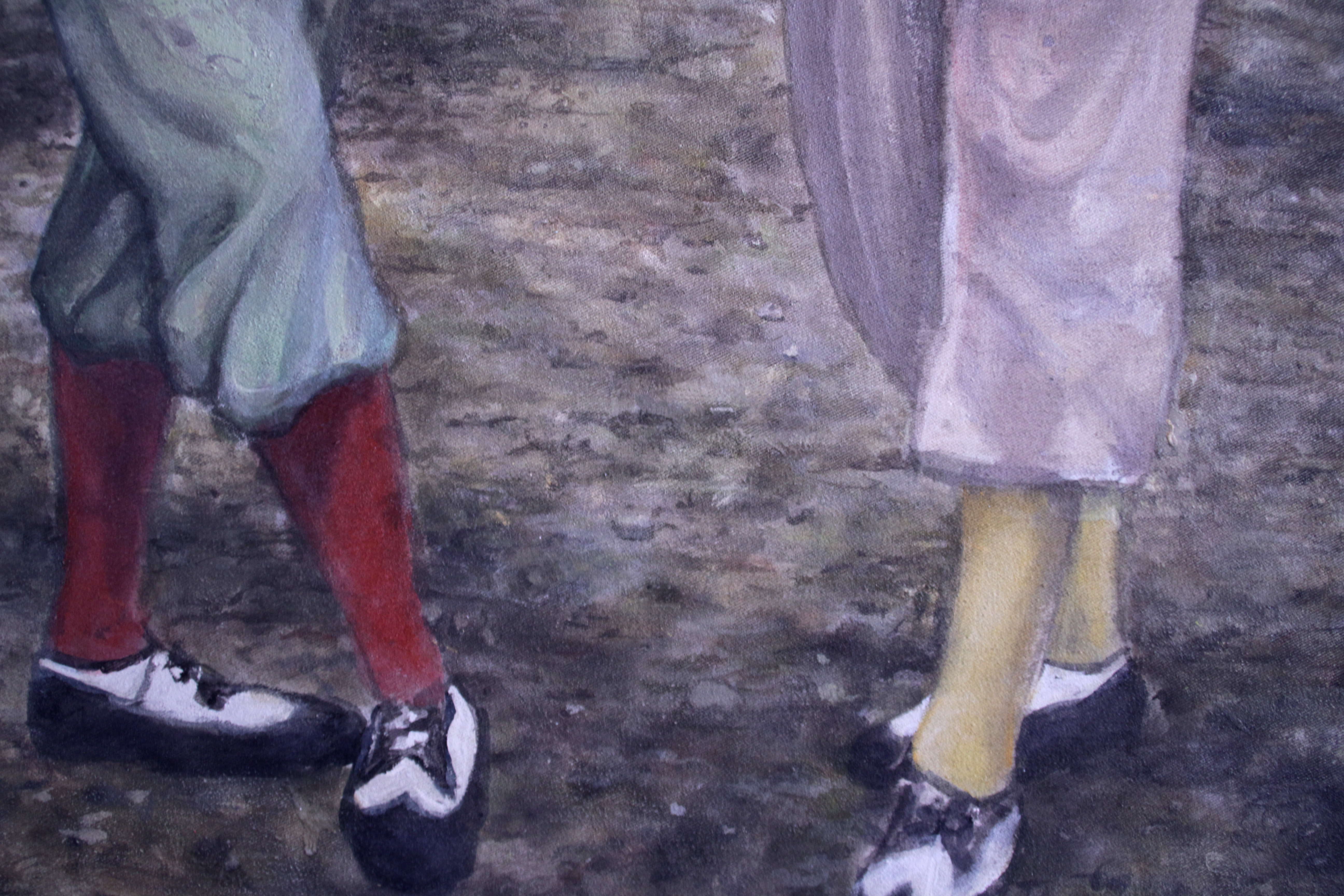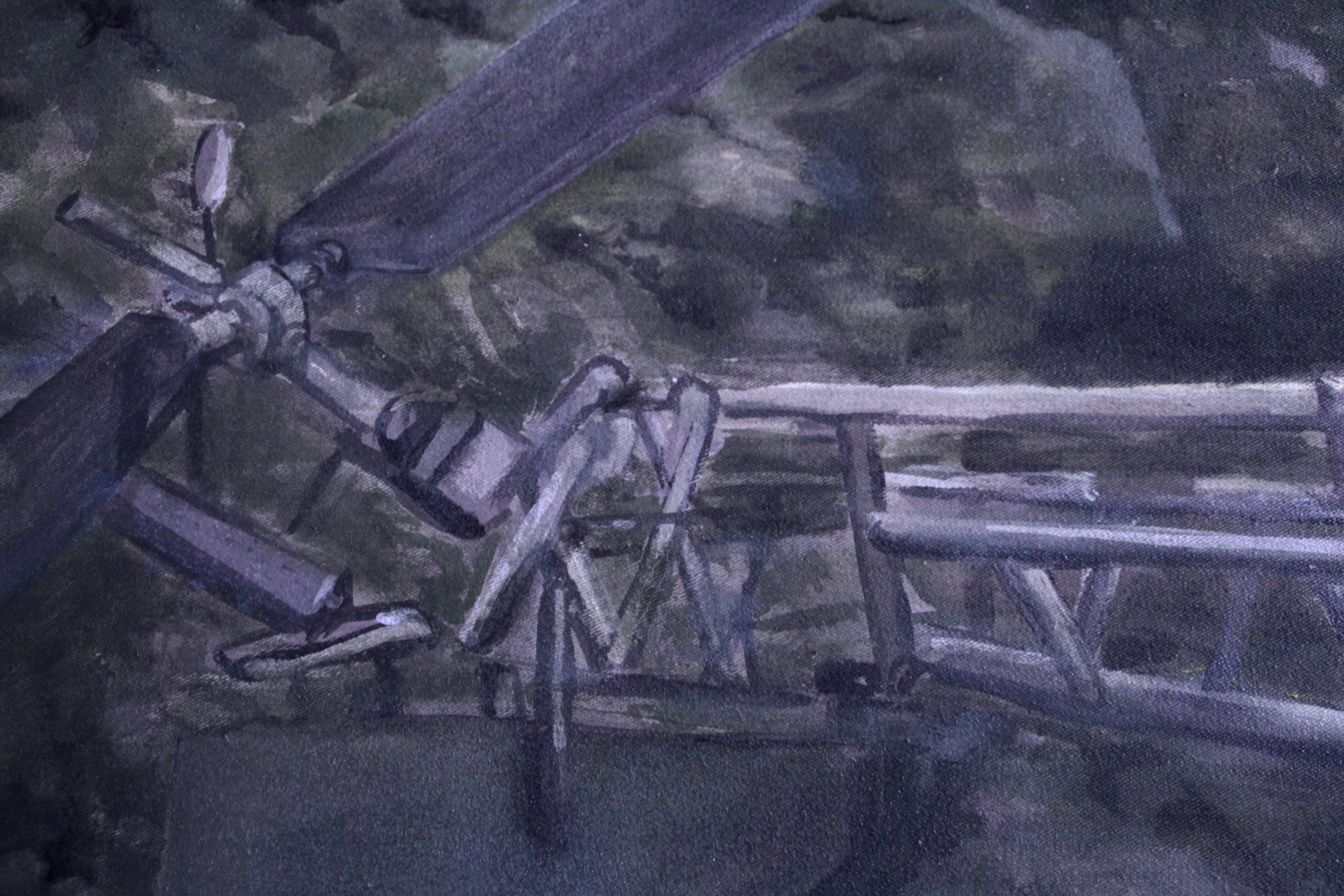Hard Fluid Betrayal is such an unexpectedly prophetic title for the final exhibition of PKRD 42. Due to special circumstances we will introduce the show to you by the way of install shots. Artists from Canada, US, Philippines, Australia, South Africa, Pakistan, Egypt and Leipzig search for the seemingly solid and yet immensely fluid space between two opposites, the distance between dualities.
In Shaima Dief´s opulent and surrealistic triptych, Nut & Hathor, we find persons who hide behind different masks, but also enjoy their increased visibility. The provocative Egyptian artist, who now lives in Leipzig, and the painter Philipp Orlowski are the local participants on Round 42 of the Pilotenkueche nternational Art Program. His painting Gary drums up the different voices of his subconscious as if to a magical séance. Because they can never be put together in one frame, this work is a diptych.
Local artists intermingle with international resident artists
Ilana Pichon, painter and sculptor from Canada, is inspired by the shapes of the streets of Leipzig. She combines them into new paths and creates labyrinths with these shapes, which appear like a mythical unknown alphabet.
Ilana‘s second artistic intervention in the Hard Fluid Betrayal exhibition is also based on the shapes of the streets of Leipzig. This time she transforms them into three-dimensional bodies that she has hidden in the space so that they can be found. She often lost herself in Leipzig’s streets, but also, like her, the objects are observing participants.
Losing and finding yourself in Leipzig
While Ilana’s pieces are subtle, Maria Kubysh‘s paintings, Gold & Hyacinth, Spring, and Native Tongue, have an active impact. They spread cheerful lightness through her choice of colours and her open use of the airy, untreated canvas. A joyful Zen experience, inspired the early Fauvists, her intention was to enable a deeper emotional connection through this offered comfort. In between these works we find Audrey Newton‘s work smash the armor. At first glance her work seems fragile. Audrey softens the rigid contours of rectangular basic forms, makes them appear personal, stacks them on top of each other, and then suddenly, they turn into a counterpart.
New perspectives
Perspective is an important topic in Austin Turley‘s random structures. However, this might be different from what you’d expect. He explores his own activity in his large-format prints Memory Palace #7 & Memory Palace #8, which he makes with hand colored gravel from playgrounds. Here the amazing connection between the micro and macrocosm makes your knees go weak viewing his work. Audrey Newton’s second sculpture made of colored latex nestled gently with presence on its pedestal and seems to radiate an unstoppable movement. Even Isobel Francisco‘s work Presence cannot be stopped. The female figure, as if caught in falling, cuts through the perspective and the perception of space.
Isobel Francisco‘s second work in this exhibition is again a larger-than-life portrait. The painting Mother is removed from its comfort zone of being framed. It is found as if thrown into the air, as if the wind or another aggressive force of nature had crumpled it up. In the next room, Denise Holland‘s video installation shows the decimation of plaster casts of the artist’s feet to emphasize our self-destructive tendencies as remnants of nature stand by and bear witness. The video can be watched on pktv. In the same room, we find drawings from Jacqueline Huskisson, where she, with very few lines, points at the potential wild animal in all of us.
We are learning how fragile we are
Making as few interventions as possible is the aim of Margo van Rooyen. She finds material or people bring it to her. Then she arranges it. She tries to do as little as possible. All her works either stand on wheels or are held together solely by the properties of the material. Her work is nevertheless very touching. It seems almost magical, the way she shows materials in their dependence, making us aware of how fragile the world around us is.
This kind of fragility, which is dependent on the decisions of everyone, is also mentioned in Philipp Orlowski‘s second painting Suicide is painless, which refers to the famous title song of the television series M*A*S*H from the 70s. The interrogation of “the easy way out“, but then over and over again one does not take it. Why not?
Hard Fluid Betrayal. Can we trust?
Hard Fluid Betrayal leads us into temptation, cheats us, but only by showing the impossibility of a clear separation between solid and liquid.
written by Julianne Csapo
Hard Fluid Betrayal
International Artists
Tomas Nuñez (AU), Maria Kubysh (CA), Audrey Newton (AU), Jacqueline Huskisson (CA), Austin Turley (US), Margo van Rooyen (ZA), Isobel Francisco (PH), Ilana Pichon (CA, CH), Sarah Bild (CA), Denise Holland (CA)
Local Artists
Shaima Dief (EG), Philipp Orlowski (DE)
Curator
Jazmin Soria (US)
Assistants: Maayan Moskona (IL), Rosie Shackleton (UK), Natacha Martins (PT)
graphic design Rosie Shackleton

